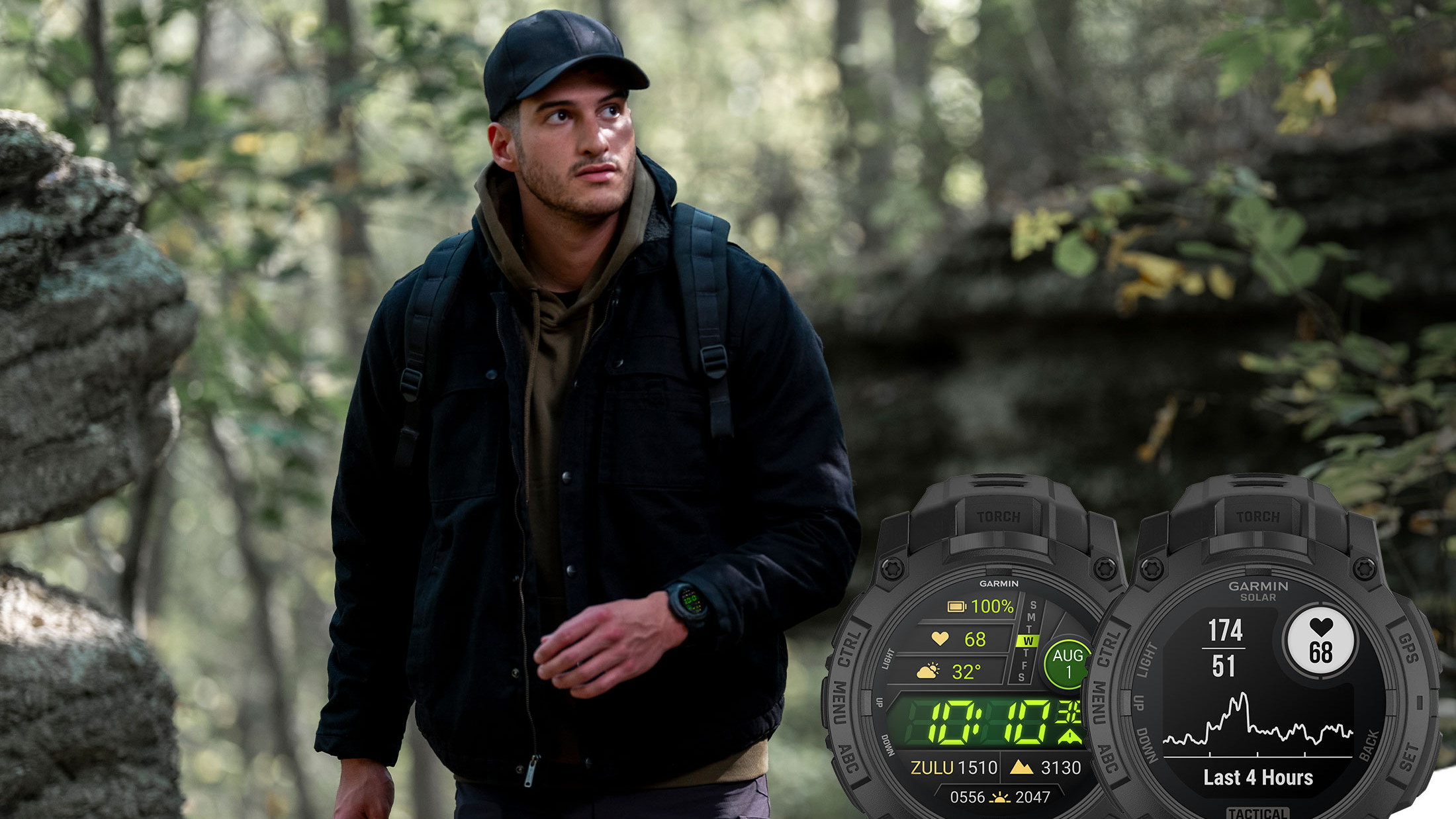The best hiking boots 2025: protect your feet on any trail with our top choices
Our selection of the best hiking boots, from lightweight trail stars to durable mountain beasts, and all the best buys in between
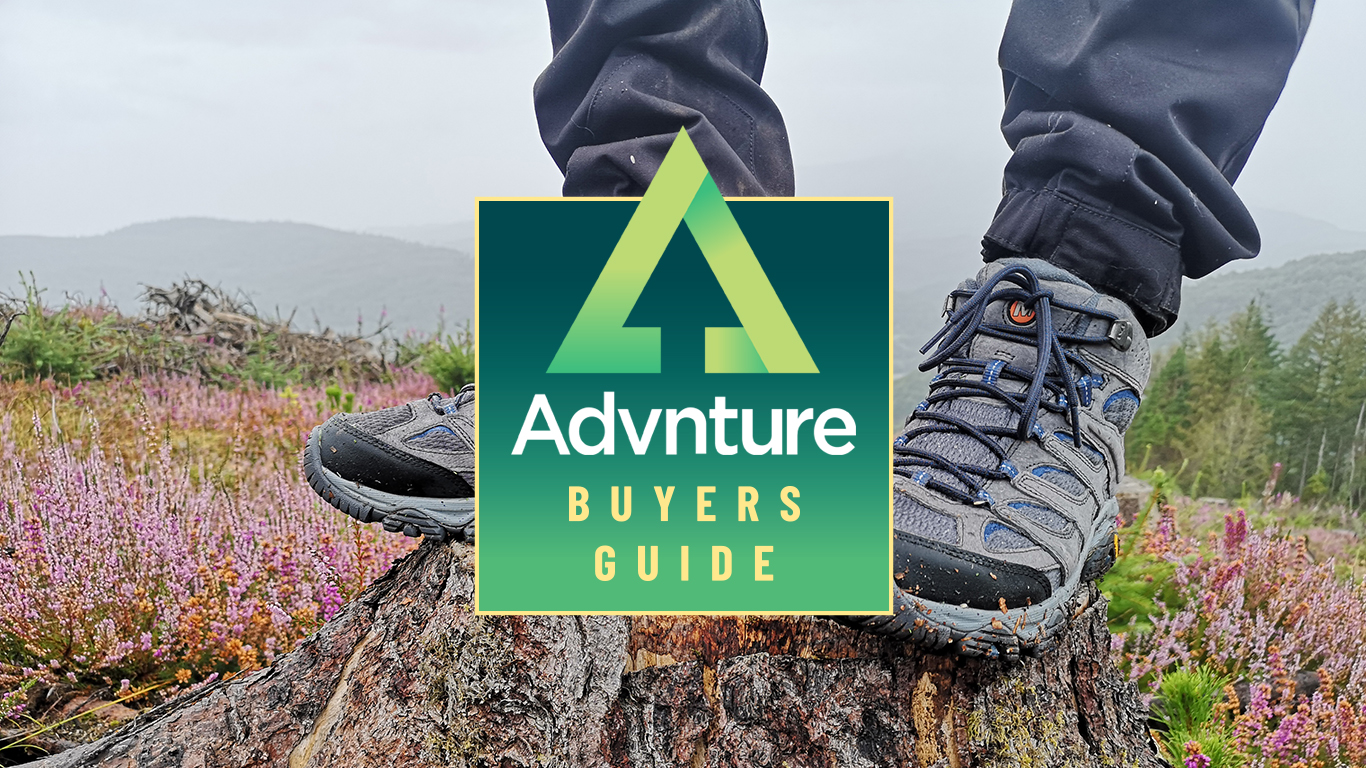
- Quick list
- Comparison table
- Best overall
- Best for serious backpacking
- Best lightweight hiking boots
- Best for the mountains
- Best for easy hiking
- Best barefoot-style boots
- Best crampon compatible hiking boots
- Best for via ferratas
- Best for wide feet
- Best for support
- Best for summer
- Best for winter
- How we test
- FAQs
- How to choose
The best hiking boots are the backbone of your trail kit and worth investing in. While you might be happy cutting corners elsewhere, nothing matches the ankle support, insulation and protection of a quality hiking boot.
Perhaps you're looking for the best lightweight hiking boots, the best hiking boots for wide feet or the most comfortable hiking boots. Whatever your requirements, hiking boots vary a lot so it's worth a deep dive. Each one of our picks suits a specific purpose. If you're looking to save money make sure you check out our expert guides to the best budget hiking boots, and the best cheap hiking boots for women too.
In wet conditions a boot with a waterproof membrane, such as Gore-Tex, is vital. The best winter hiking boots usually come with waterproofing as standard, as well as grippy rubber outsoles that provide traction on boggy ground and wet rock. They should also save you from a soaking if you unexpectedly find yourself up the ankle in mud! Meanwhile, the high cut of these kinds of boots will mean your ankles stay protected from knocks and bumps.
Female hikers should also see our guide to the best women's hiking boots.
The quick list
This is our quick list, a brief overview of the best hiking boots available today. To delve deeper into each pair, see our more detailed write ups further down the page in this guide.
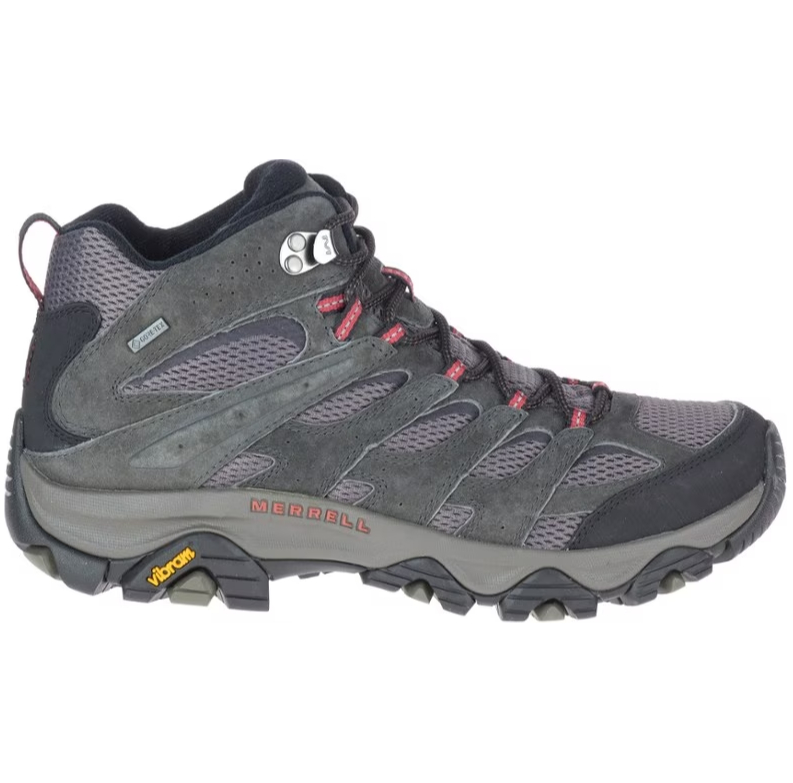
A good balance of support and stability, with more arch support than most hiking boots
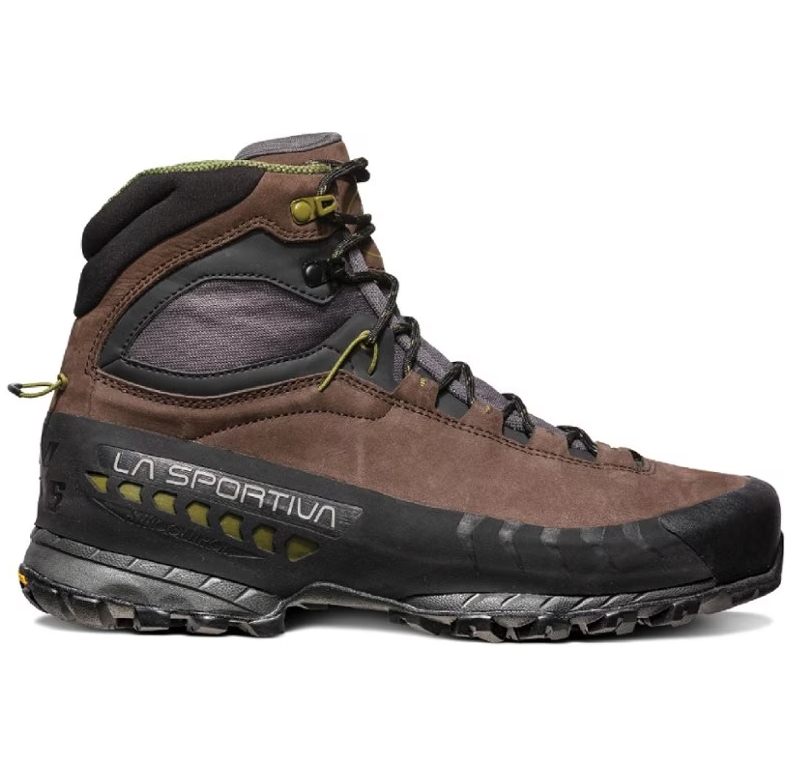
Great protection on rough trails, with plenty of support when you're carrying a heavy pack.
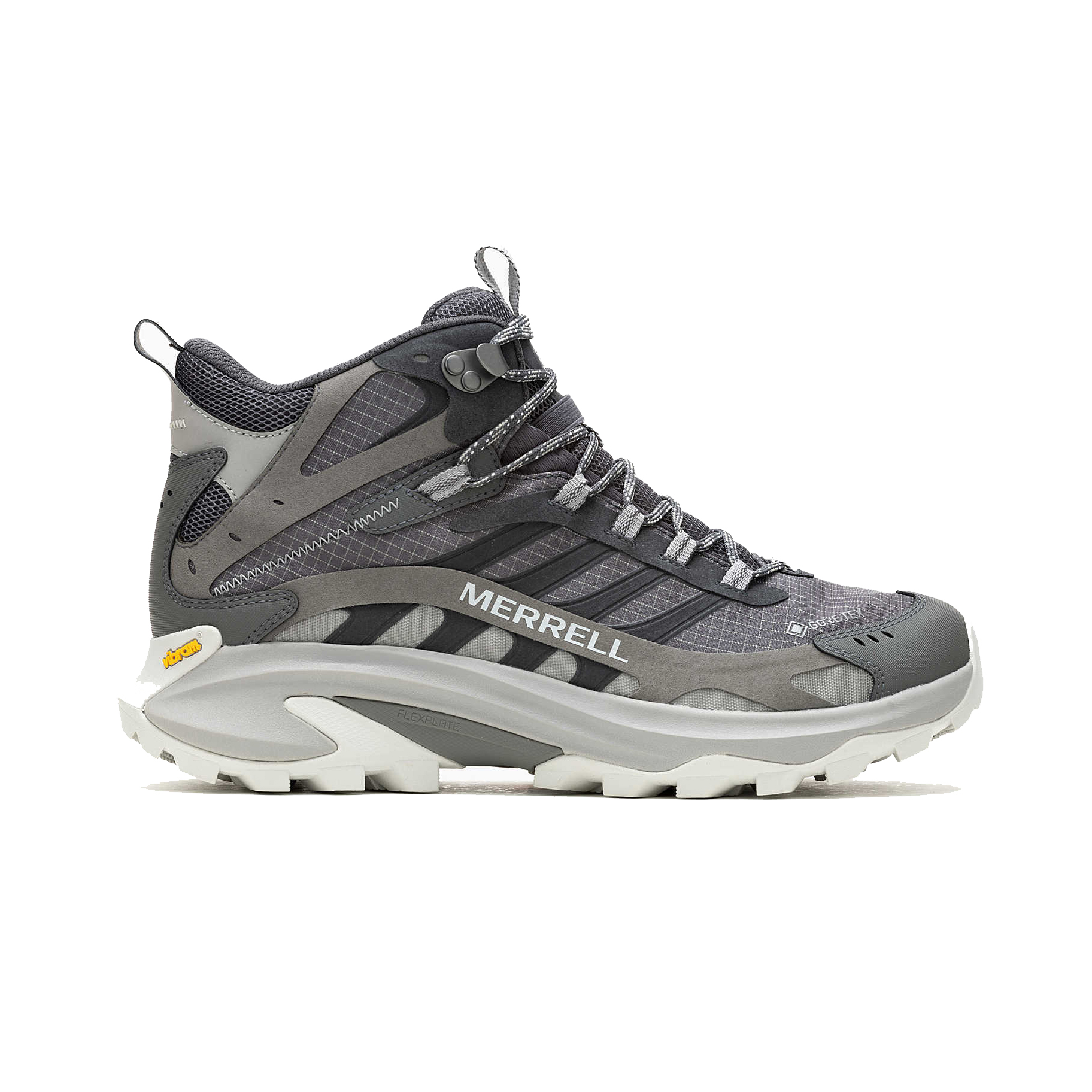
A lightweight all-rounder that's great for multi-day missions when you're seeking comfort and good ankle support

Striking a balance between protection, stability and comfort, the Trekker Lite IIIs are a superb mountain hiking boot
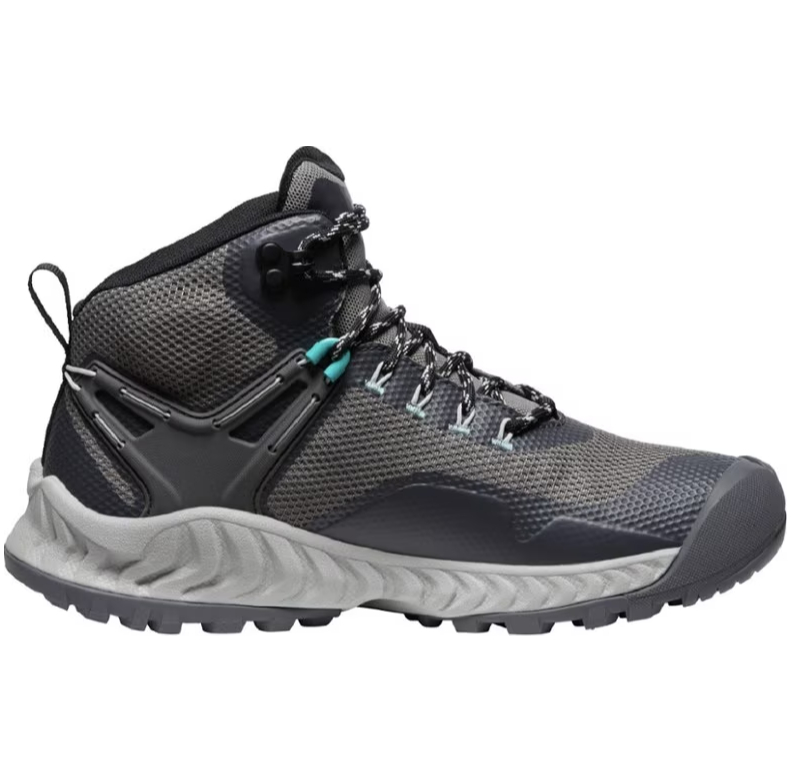
A joy to wear on more established trails. Light and comfortable, with a great heel lock system.
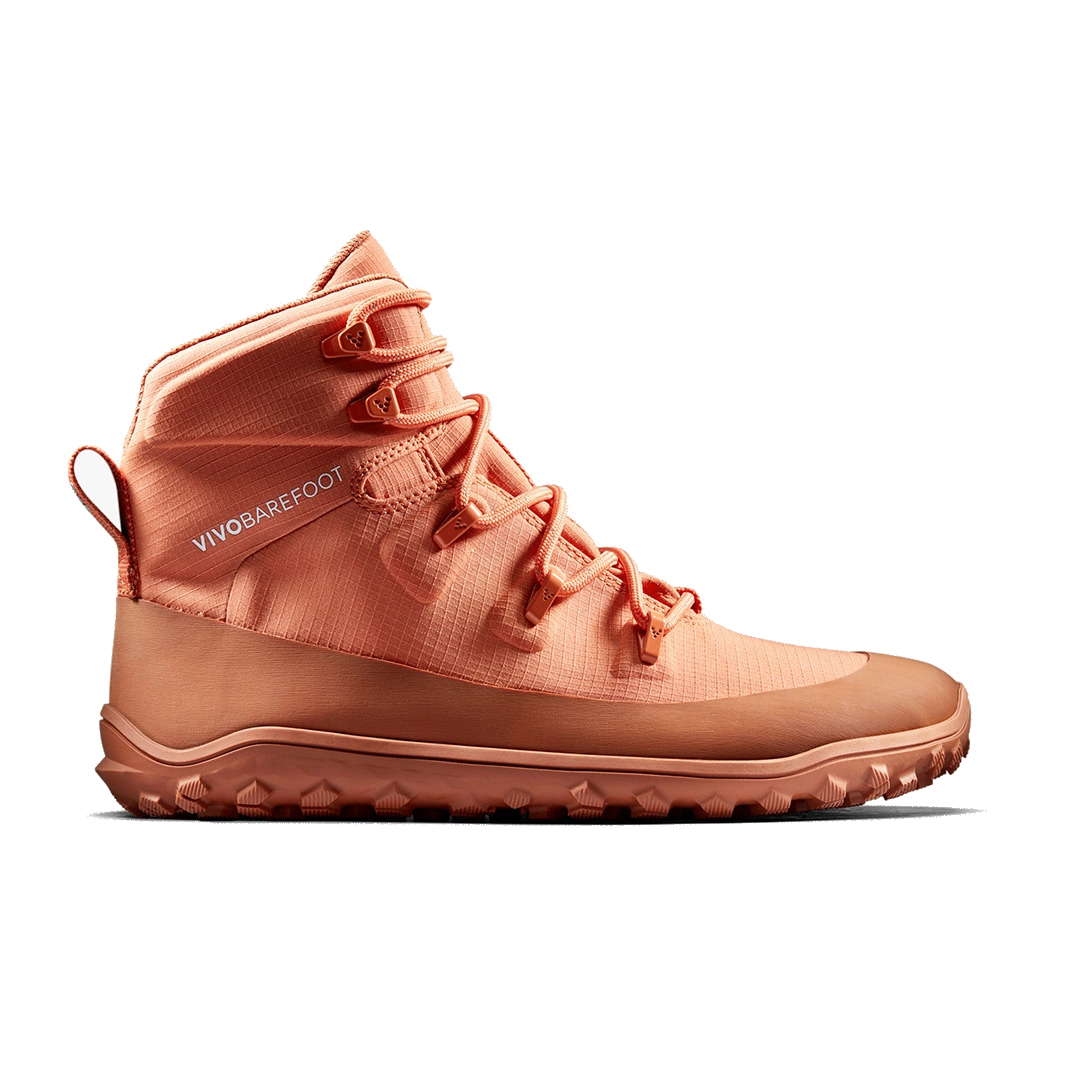
An upgrade on earlier barefoot boot iterations from the brand, the Vivobarefoot Tracker Textile AT is now made from fully recycled and vegan materials and includes a removable thermal insole to add insulation on colder days

These crampon-compatible hiking boots might be heavy-duty, but they're also very comfortable, waterproof, breathable, and suitable for all but the hottest summer days
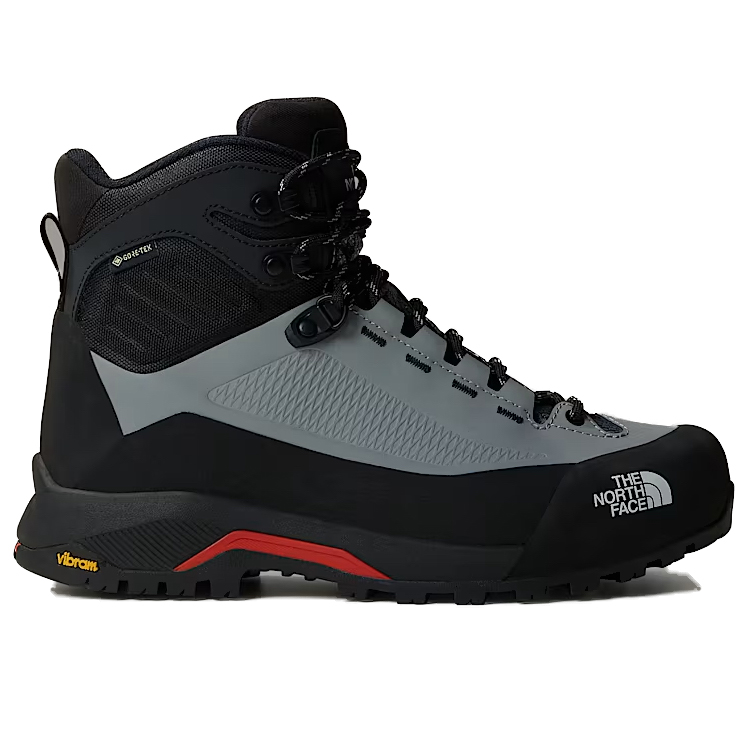
Built with more support than most hiking boots, The North Face Verto Gore-Tex Alpine Mid Boots are lightweight, waterproof and comfortable, yet offer reinforced uppers and grippy Vibram soles that make them idea for climbing and scrambling
Read more below
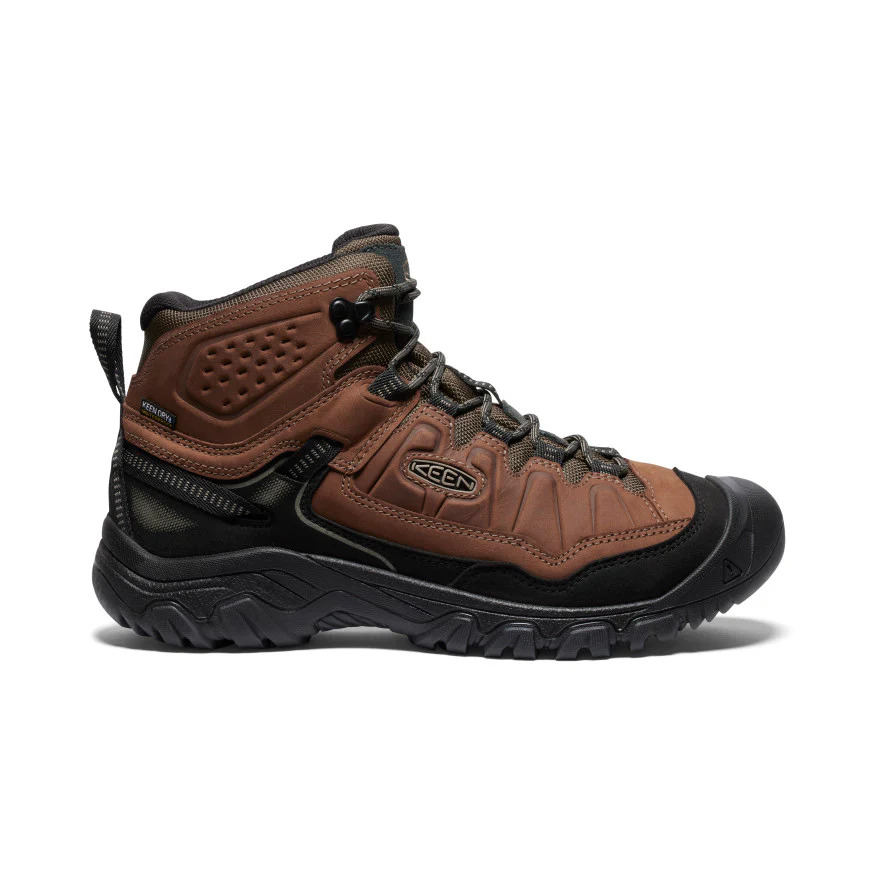
If you've got wide feet you may already be familiar with the Keen brand, as the company is known for its generous last that suits those with broader hoofs. The latest version of the Targhee has a heat welded sole, meaning it shouldn't delaminate
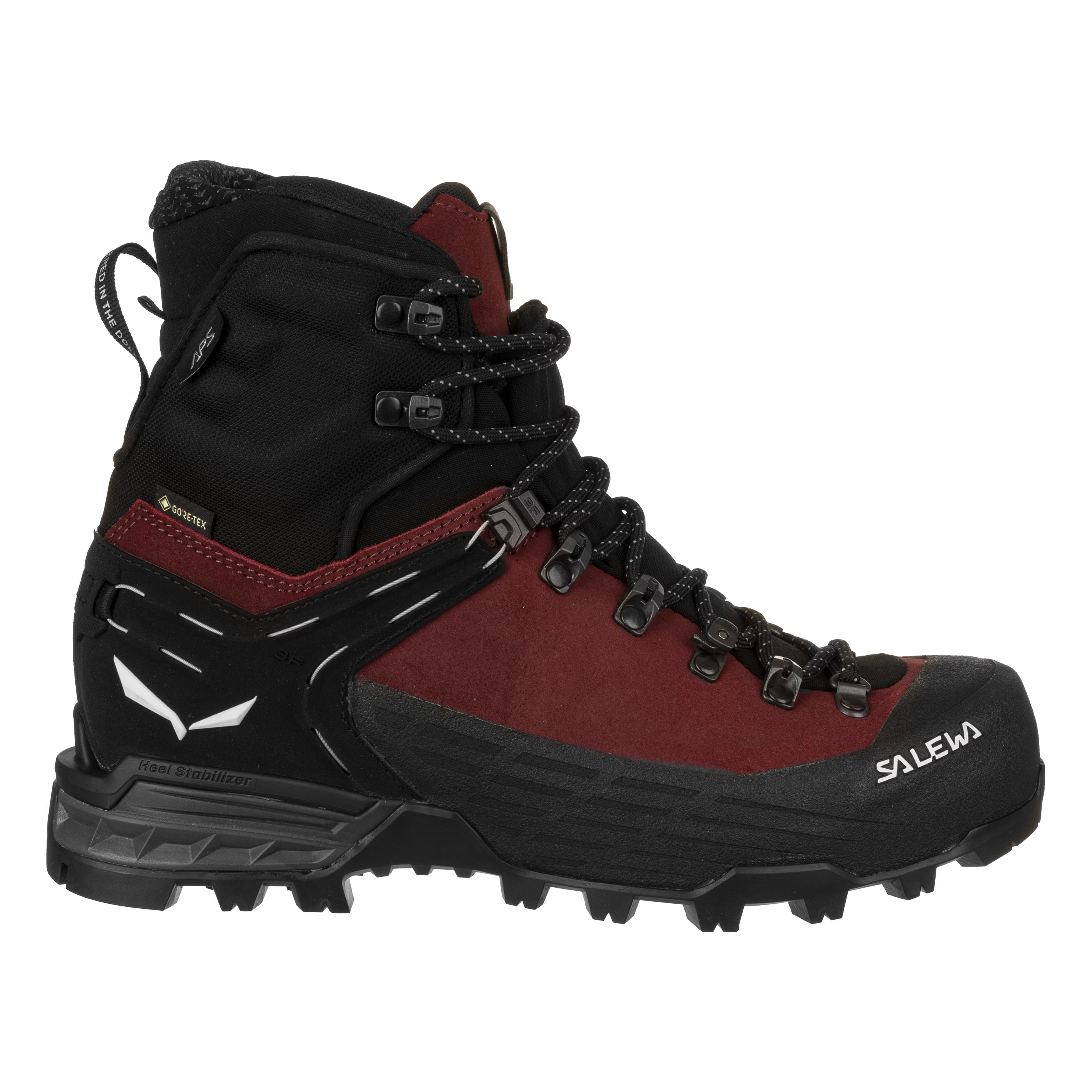
Sturdy and supportive, the Salewa Ortles Ascent Mid Gore-Tex Boots have grippy soles with durable, self-cleaning lugs for confident hiking
Read more below
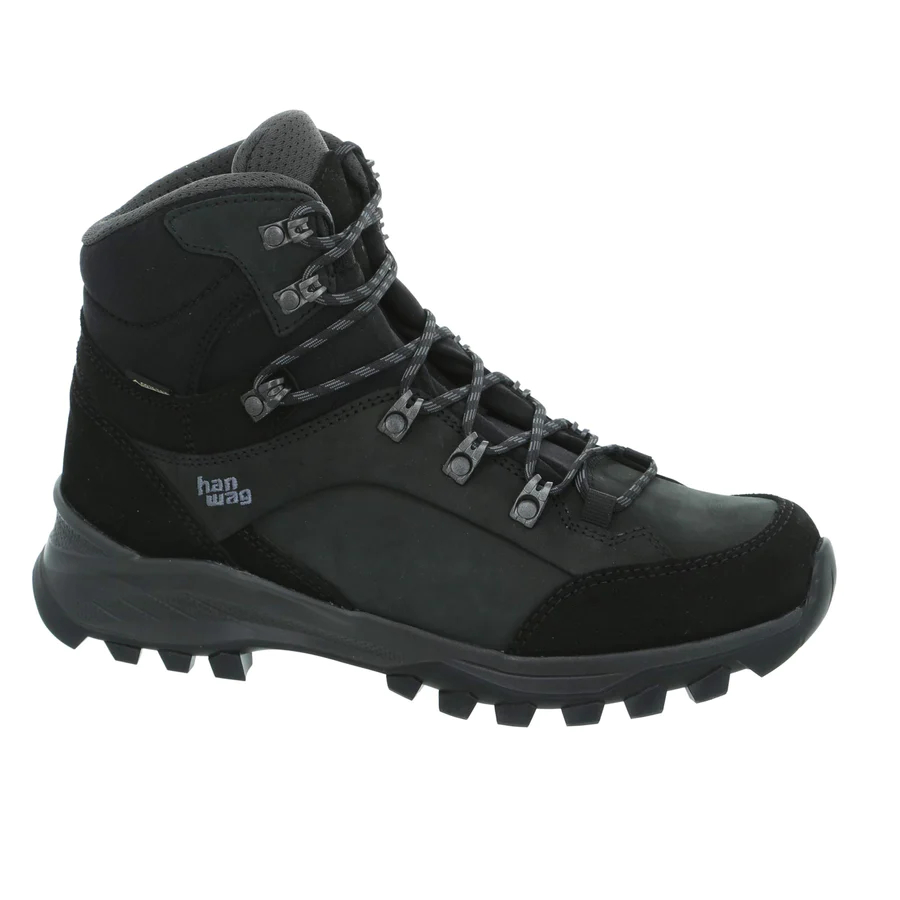
A supremely comfortable, classy looking and well constructed boot that'll give you years of summer adventures.
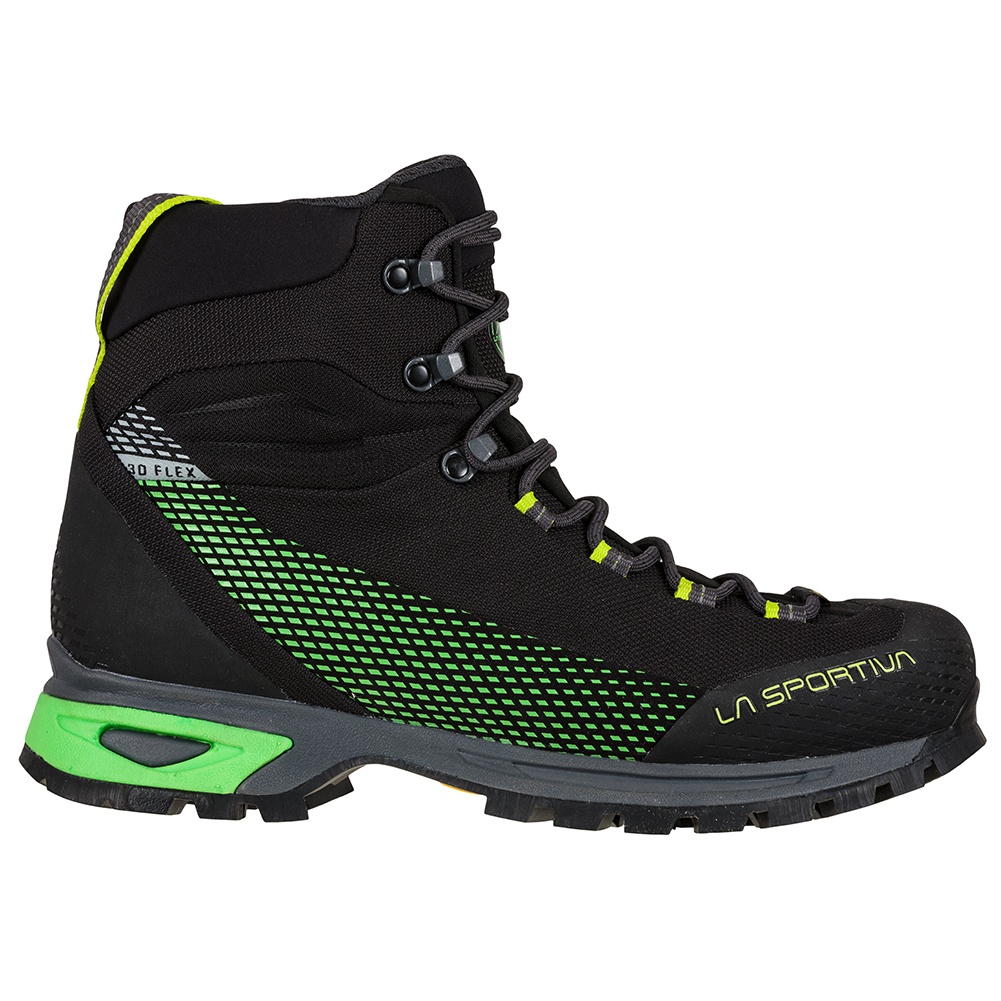
Great technical boot with flexibility in ankle and toe, but enough rigidity for rock work.
The best hiking boots comparison table
Hiking boot | Price | Weight | Materials | Style | Best use |
Merrell Moab 3 Mid GTX | $170 (US) / £150 (UK) | 593g / 20.9oz | Pigskin leather and mesh upper; Gore-Tex membrane; 100% recycled mesh lining; Merrell Air Cushion heel; Vibram TC5+ outsole | Waterproof, mid-height hiking boots | 3 season use: sub-alpine hiking and trekking on hills, dales and trails |
La Sportiva TX5 GTX | $218 (US) / £180 (UK) | 530g / 18.7oz | Nubuck leather upper, Gore-Tex extended comfort liner, Ortholite Approach footbed, Vibram MegaGrip outsole | Waterproof, rugged hiking boot | 3 season use: hiking, backpacking, technical trails |
Merrell Moab Speed 2 Mid Gore-Tex | $180 (US) / £160 (UK) | 400g / 14.1oz | Nylon ripstop and TPU upper, Gore-Tex membrane, Vibram TC5+ rubber outsole, 100% recycled mesh and laces, 50% recycled EVA foam footbed | Waterproof, lightweight mid-height hiking boot | 4 season use: most forms of hiking |
AKU Trekker Lite III GTX | $259.95 (US) / £220 (UK) | 570g / 20oz | Suede & welded PU full upper; Gore-Tex membrane; double-intensity die-cut EVA midsole; Vibram Curcuma outsole | Waterproof mid-height hiking boots | 3 season use: hiking, backpacking, trekking, scrambling, technical trails |
Keen NXIS EVO Mid | $190 (US) / £140 (UK) | 429g / 15.13oz | Performance mesh upper with TPU overlays, KEEN.DRY waterproof & breathable membrane, speed-lace webbing system, breathable textile lining, removable PU insole, compression-molded EVA midsole, KEEN.ALL-TERRAIN rubber outsole | Waterproof, mid-height hiking boot | 3-season use: day walking, hiking and trekking on non-technical trails |
Vivobarefoot Tracker Textile AT | $220 (US) / £180 (UK) | 406g / 14oz | Upper: 95% recycled polyester, 5% Spandex; Insole: 40% polyester, 40% PU foam, 20% aluminum; Outsole: 20% natural rubber, 55% synthetic rubber, 25% additives | Barefoot hiking boots | 3 season use: light hiking, hill walking |
Scarpa Mescalito TRK Pro GTX | $TBD / £285 (UK) | 710g / 25oz (size 42) | Nubuck leather upper | Waterproof, heavy duty hiking boots | 4 season use: crampon compatible |
Keen Targhee IV Mid | $170 (US), £155 (UK) | 585g / 20.6oz (Women’s US size 10, UK size 8, EU size 42) | Majority leather upper, Vibram sole, recycled Gore-Tex lining | Water resistant, durable, mid-height hiking boot | 3-season hiking, trekking and hut to hut adventures |
Hanwag Banks | $250 (US) / £235 (UK) | 625g / 22oz | Nubuck leather and 100% recycled performance mesh upper, KEEN.DRY waterproof inner membrane, Luftcell midsole, Luftcell insole, KEEN.RUGGED outsole | Waterproof, mid-height hiking boot | 3 season use: light hiking, lowland trails |
La Sportiva Trango TRK GTX | $258.50 (US) / £215 (UK) | 720g / 25.4oz | Upper: 2.0-2.2mm Suede Leather, 3F System with Steel Cables, Nylon (PA) elastic gaiter, Protective TPU rand; Outsole: Vibram Alpine Guide | Waterproof, rugged hiking boot | 4 season use: hiking, backpacking, trekking, technical trails, scrambling. |
The best hiking boots we recommend in 2025
You can trust Advnture
The best hiking boots overall
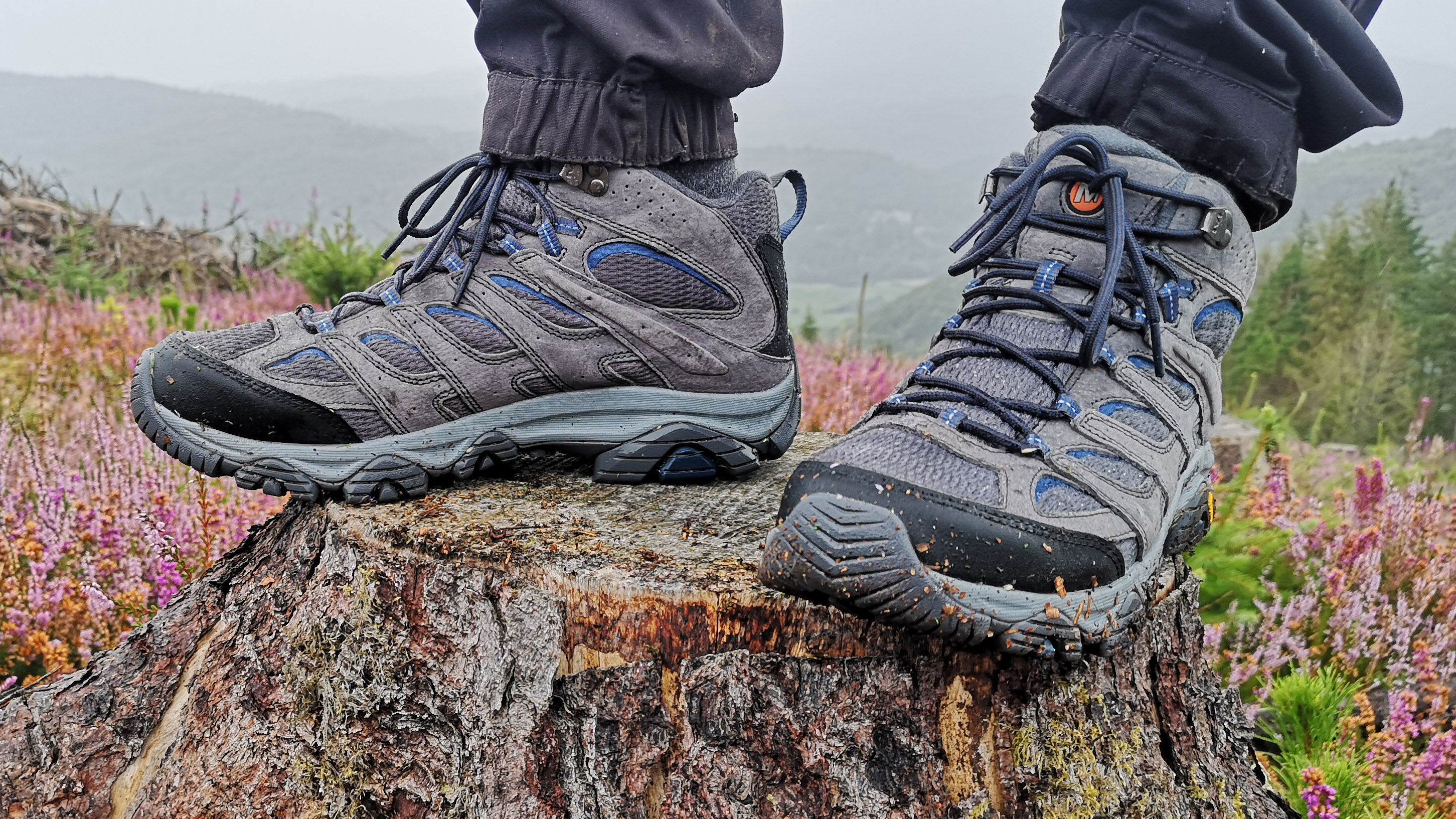
Specifications
Reasons to buy
Reasons to avoid
Merrell has kept the key features that make the Moab a classic, including its accommodating fit, wide toebox and plush padded ankle collar, but this third iteration has had a few upgrades too. Our expert reviewer Matthew Jones noted that the redesigned uppers have smaller mesh panels and more robust pigskin suede leather for enhanced durability, backed with a waterproof and breathable Gore-Tex liner.
In common with trends in the wider outdoor industry, Merrell has focused on making the Moab more sustainable too. The mesh, webbing and laces are all now made from recycled materials.
Matthew found that the midsole delivers a good balance of stability and cushioning, with a bit more arch support than most mid boots. The Vibram outsole also has chunky 5mm lugs for dependable traction. All in all, it’s a solid and well-built boot, which is comfortable and reliable, with versatile all-round performance and an accommodating fit.
Read our full Merrell Moab 3 Mid GTX hiking boots review
The best hiking boots for serious backpacking
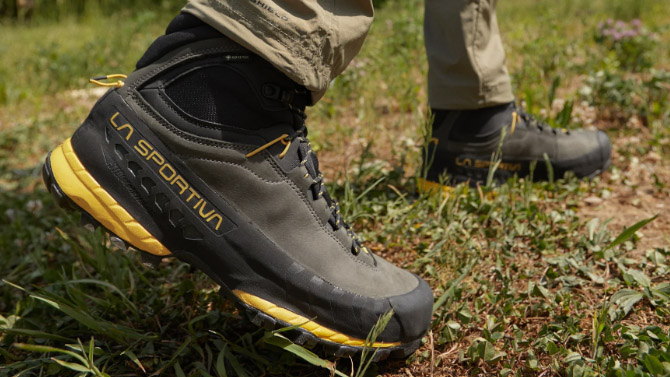
2. La Sportiva TX5 GTX
Our expert review:
Specifications
Reasons to buy
Reasons to avoid
When you throw a heavy backpack on your shoulders, you need a rugged hiking boot to carry the load. We found that the La Sportiva's TX5 is up to the challenge. A Gore-Tex Extended Comfort membrane supplies the breathable barrier against the in ingress of water, while an Ortholite Approach footbed supported our foot inside the boot. On the outside the Nubuck leather upper is mountain-fit, and a protective rubber rand, toecap and a combined to shield our feet from roots, rocks and trail debris. The high collar not only provides protection for ankles, its also supplies excellent support for when we were tackling technical trails with a heavy pack.
Deep in the forest and high in the hills, when the underfoot conditions are rocky, slippery and uneven, the boot’s Vibram MegaGrip sole and Impact Brake System offers shock protection and stability. LaSportiva’s 3D Flex System and an underfoot stabilizer provides freedom of movement yet further protects your lower legs from twists and turns on challenging and tricky terrain.
The best lightweight hiking boots
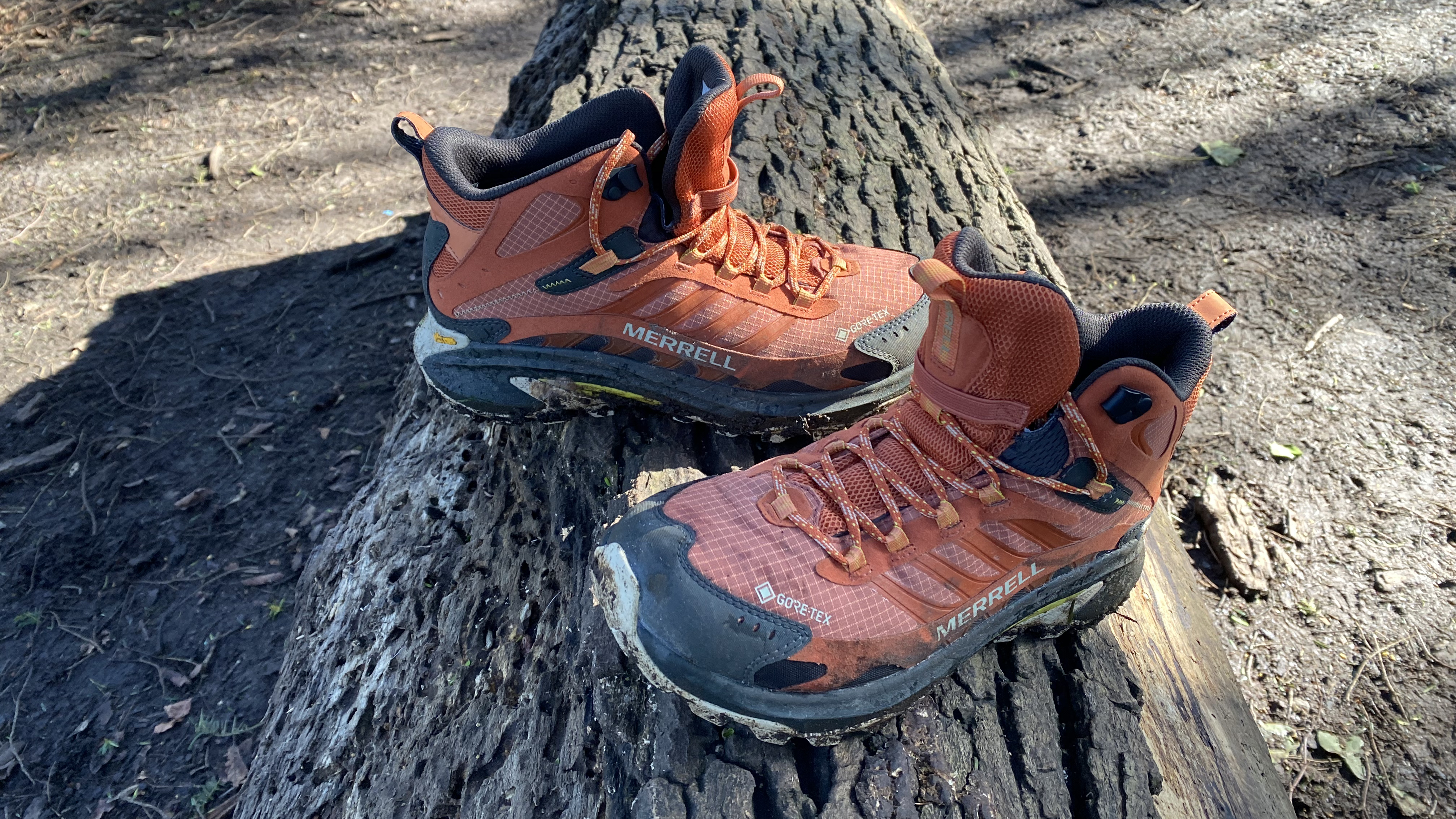
Specifications
Reasons to buy
Reasons to avoid
It might be named after Moab city on the edge of Utah's Arches National Park, but many hikers believe the name of the original Merrell Moab stands for Mother of All Boots, and with good reason. The brand claims it as the world's best selling hiking boot, with more than 28 million sold since it was launched 15 years ago.
Now the company has produced the Merrell Moab Speed 2 GTX, a hiking boot aimed at delivering all the desirable features of the flagship design, but at a lower weight. Our tester Alex Foxfield described this model, available in mid and low-cut options, as looking like a boot but feeling like a shoe. They're a significant 193g (6.8 oz) lighter than the Moab 3 Mid GTX, tipping the scales at just 400g (14.1 oz) per boot.
And while they may have more of a sneaker aesthetic than the classic version, they still tick the hiking box, with features including a Gore-Tex membrane to keep the water out, grippy Vibram soles and upper lace hooks. They're comfortable straight away too, although with less space for your toes than rival brand Keen.
As a lighter option, there's no leather in the Speed 2. Instead it has a ripstop nylon upper and uses a significant amount of recycled materials. There's plenty of ankle cushioning and a gusseted tongue to keep out trail muck. However, there isn't a protective rand, and the outsole is less rigid than the classic version, which is probably why the brand rates this design for moderate trail use rather than truly rugged terrain. This model is a standout on comfort though, with Alex rating them as among the most comfortable boots he's ever worn.
Read our full Merrell Moab Speed 2 GTX review
The best hiking boots for mountain routes
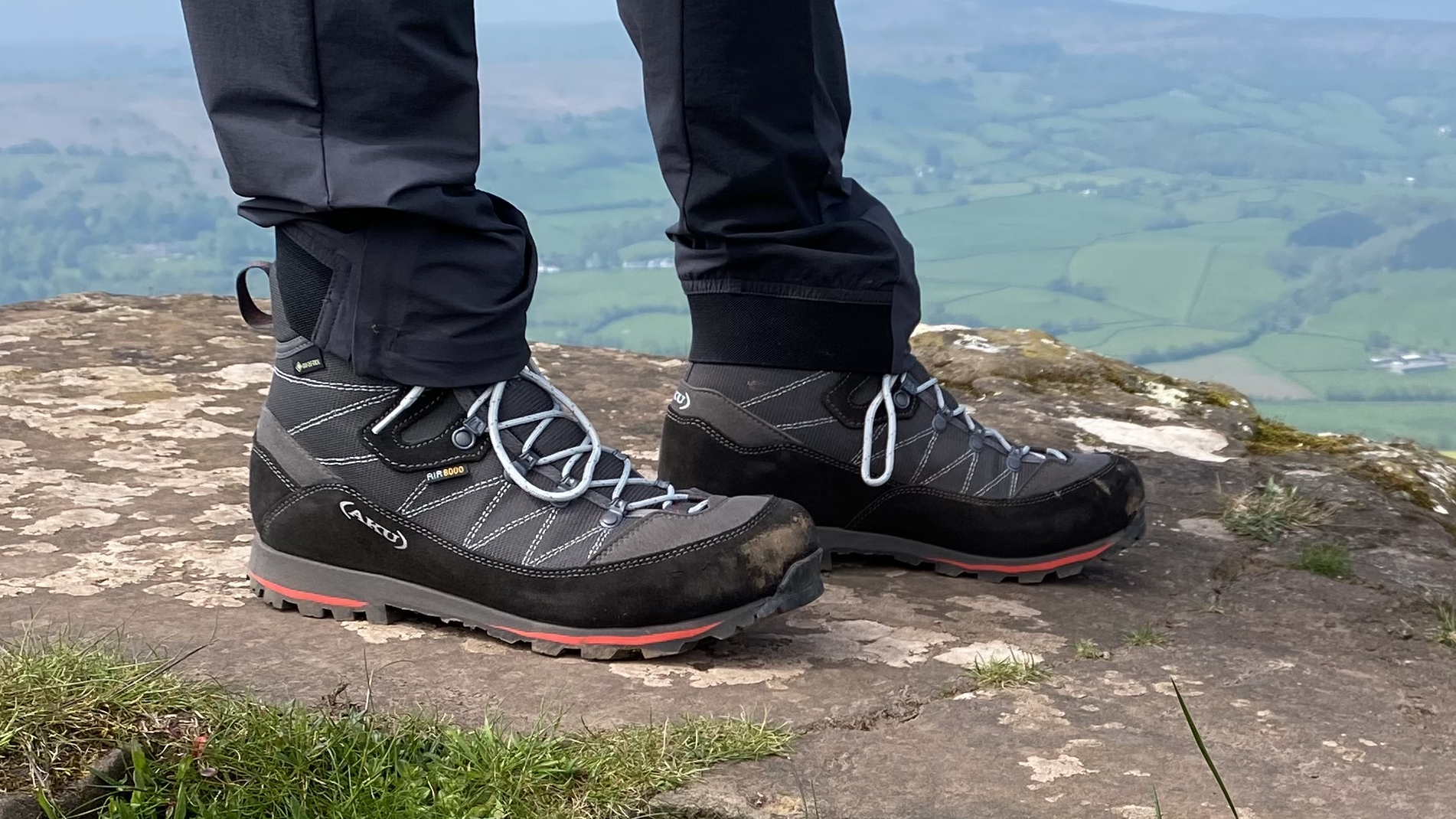
Specifications
Reasons to buy
Reasons to avoid
These beautiful boots from a brand based in the Italian alps absolutely ooze style before you get them dirty, but we found they also perform impressively once we stopped posing and started tackling trails and peaks. The construction is robust, with precision stitching reinforcing each eyelet in the lacing system, which is where pressure is applied every time you pull the boots on. Having three pairs of quick-lace hooks at the top of each boot really enabled our tester, mountain leader Alex Foxfield, to get them done up nice and tight, for a firm and secure ride.
The component parts are all top end, from the Vibram Curcuma outsole up to the Gore-Tex lined suede-and-fabric upper. There is an all-round rand that shields toes and heels and on test they were warm, comfortable, confidence-giving and classy, protecting your feet from the elements and supplying a really decent level of performance. They’re not as lightweight as some other day walking boots out there, but the level of ankle support is far superior to the vast majority of other comparable boots. The standard last is quite narrow in the toe box department, but the Trekker Lite IIIs are also available in a wide fit.
Read our full Aku Trekker Lite III GTX review
The best hiking boots for easy hiking
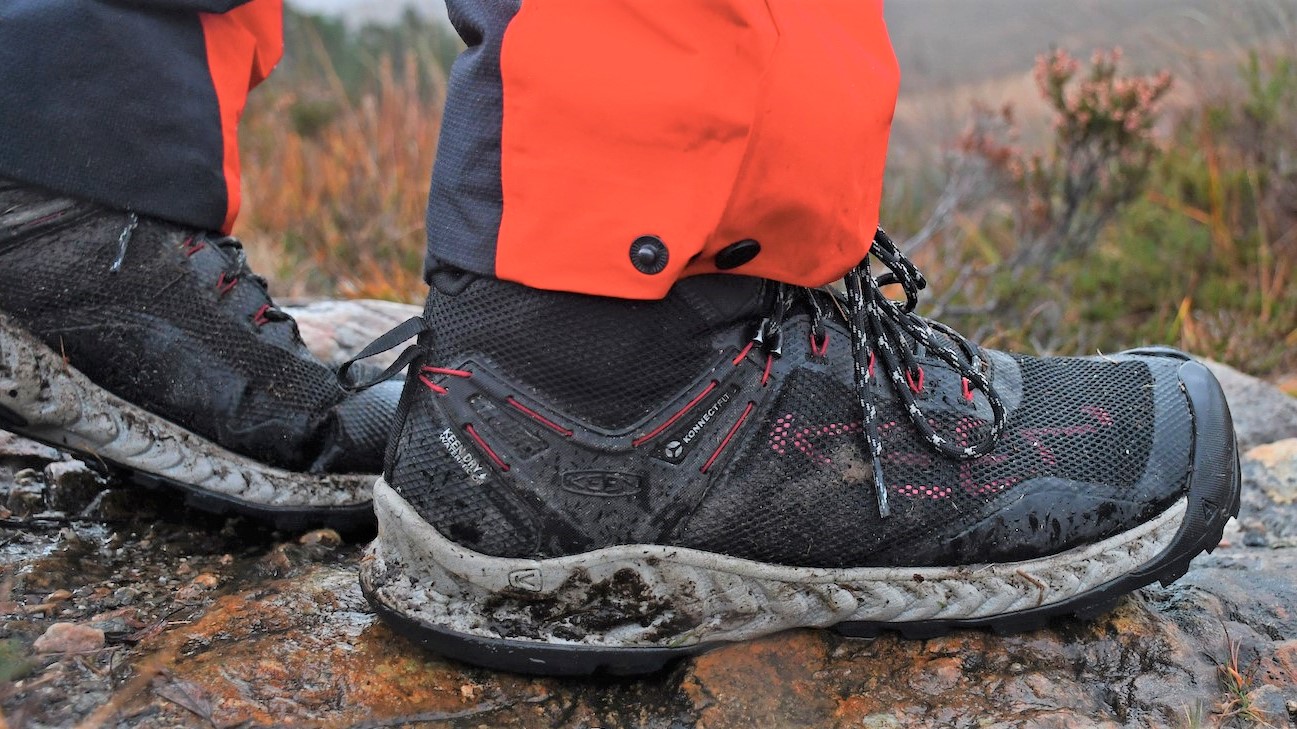
Specifications
Reasons to buy
Reasons to avoid
This is one of the lighter and less protective and aggressive models in the Keen boot range, aimed at people who prioritise staying nimble and moving fast across landscapes such as long-distance trails, rather than attempting hard hikes in really tough terrain. However, with some ankle support and an excellent heel-lock system, they are capable of looking after you on reasonably technical trails and/or multiday escapades while wearing a pack. The 4mm multidirectional lugs on the outsole are also adequate for such escapades in most conditions, but they’re not aggressive enough for anything too epic.
But, used in the right conditions and on the tracks they were designed to tackle, these boots are a joy to wear. Quick and easy to put on, they felt fantastically light and comfortable on our feet. Featuring the brand’s own KEEN.DRY membrane, the NXIS EVOs are waterproof and breathable. On test by hiking veteran Pat Kinsella in wet and muddy conditions, the external knit mesh did accumulate lots of dirt, however, which impacted their performance.
Read our full Keen NVIS EVO Mid review
The best barefoot-style hiking boots
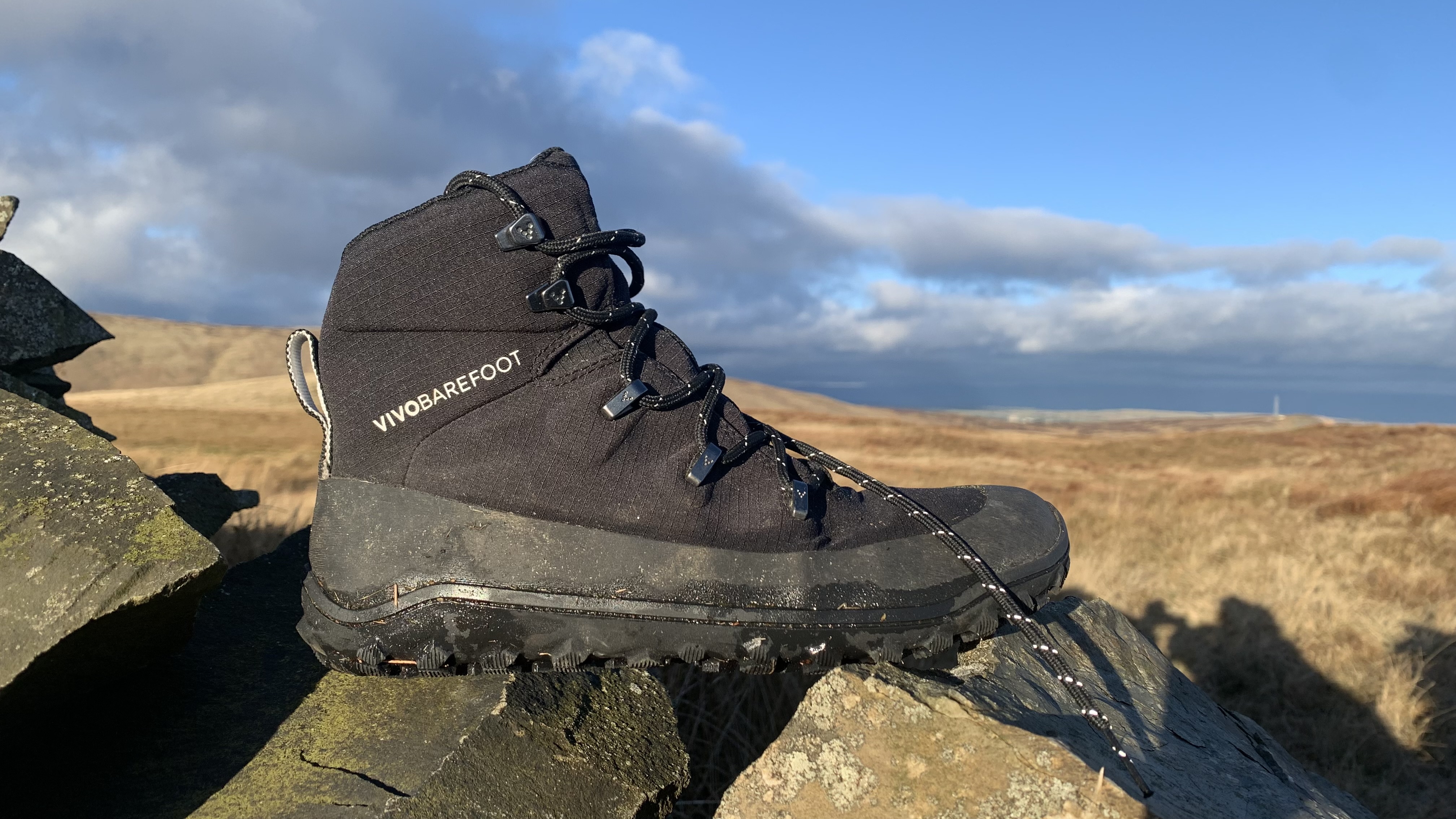
Specifications
Reasons to buy
Reasons to avoid
If you've been pondering the idea of barefoot hiking boots but have been put off by their reputation for lacking warmth and protection, Vivobarefoot's Tracker Textile AT may just change your mind.
Not only do they feature more protection than we've typically seen in barefoot boots, they come with a removable thermal insole, meaning it's still possible to hike comfortably in wintery conditions.
The 2.5mm midsole provides excellent flexibility and, while this isn't what everyone is looking for in a hiking boot, we think they're unmatched when it comes to trail feel.
With outsoles featuring grippy 4mm lugs, our reviewer Julia Clarke found these boots did well in all but super slick conditions, and says that it's easier to 'catch' yourself in these boots if you do slip.
Anyone with wide feet should also consider barefoot shoes and boots generally - their wide toe box helps your toes flex and grip. The zero drop between heel and toe that defines barefoot styles can take some getting used to, and the brand recommends wearing them every day for six weeks to become accustomed to the sensation.
This pair comes with a waterproof membrane, which is a good thing, as they also come at a premium price, but Julia is a convert, saying: "We think you'll have a hard time finding another pair that performs as well as these, especially if you're venturing out in wet and cold conditions."
Read our full Vivobarefoot Tracker Textile AT hiking boot review
The best crampon compatible hiking boots
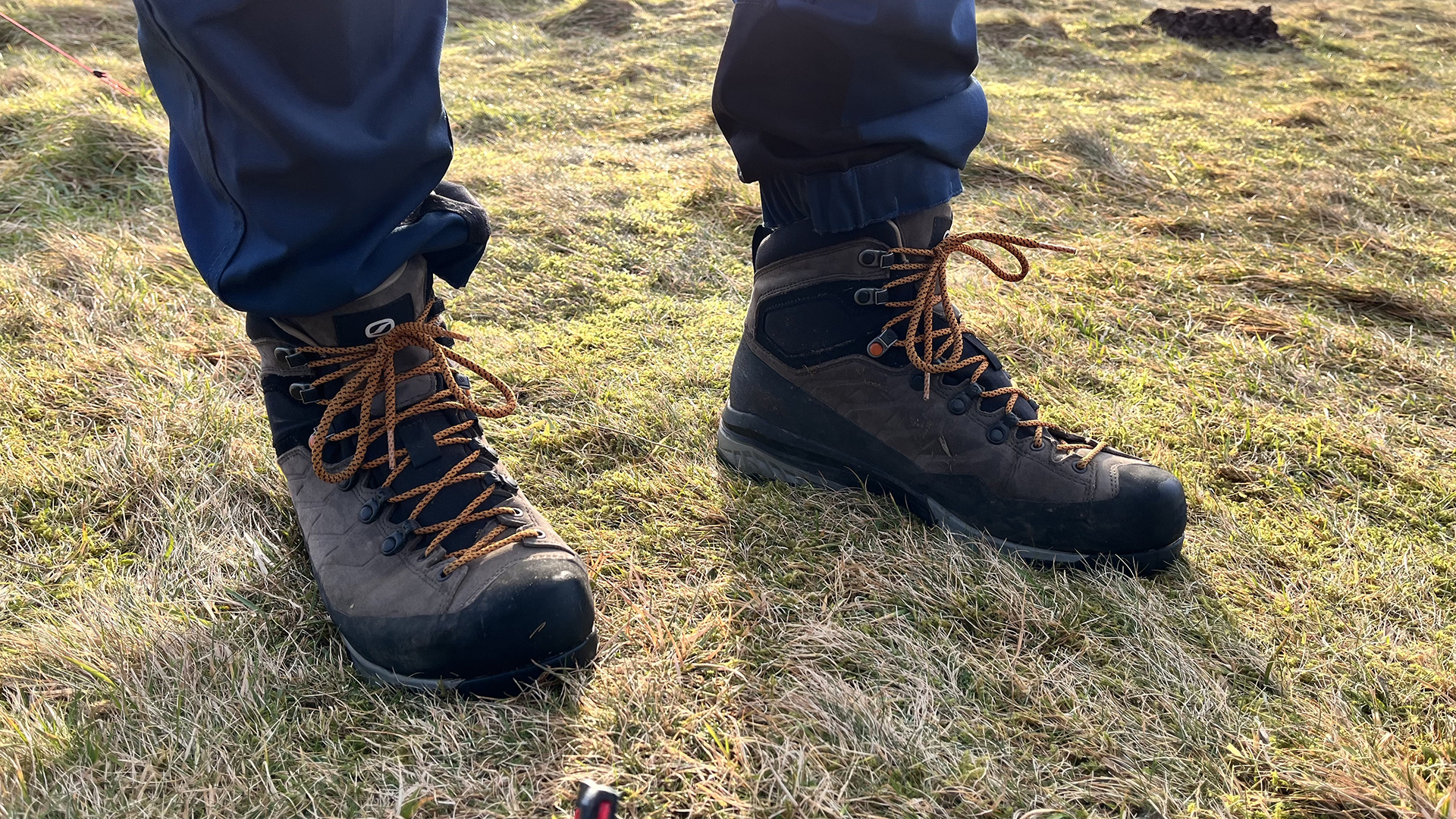
Specifications
Reasons to buy
Reasons to avoid
The Scarpa Mescalito TRK Pro GTX might not be the lightest boot out there, clocking in at a not insignificant 710g / 1.6 lb for a US size 10 (UK size 8, EU 42). But that shouldn't count against it, as this is a heavy duty boot and its weight is comparable to boots like the La Sportiva Trango Tower GTX, which is designed to do a similar job.
This is a durable model, with a decent price relative to other boots with the same kind of spec. The design combines comfort and flexibility with a high level of protection and durability. And it's got a B1 rating to boot (sorry), which means it's crampon compatible. Although the plush nubuck upper means it's warmer than some, it's perfectly suitable for use in all seasons in more temperate countries like the UK and so definitely falls into the all rounder category.
Do bear in mind that this is a style that needs to be worn in, although not for as long as our tester Matthew Jones anticipated, finding that they were comfortable enough after just a couple of wears. It is important to lace these boots properly and position the tongue correctly. The fit needs to be precise or you will get rubbing. But don't let that put you off - just don't scrimp on adjusting them properly when you pull them on and you should be fine.
Despite wearing them across boggy ground for long periods, Matthew found the waterproofing held up well, with no water penetrating inside the boot. The DYNAMIS TRK sole was impressively grippy and handled technical terrain well, while remaining comfortable on flat paths as well.
Read our full Scarpa Mescalito TRK Pro GTX review
The best hiking boots for via ferrats
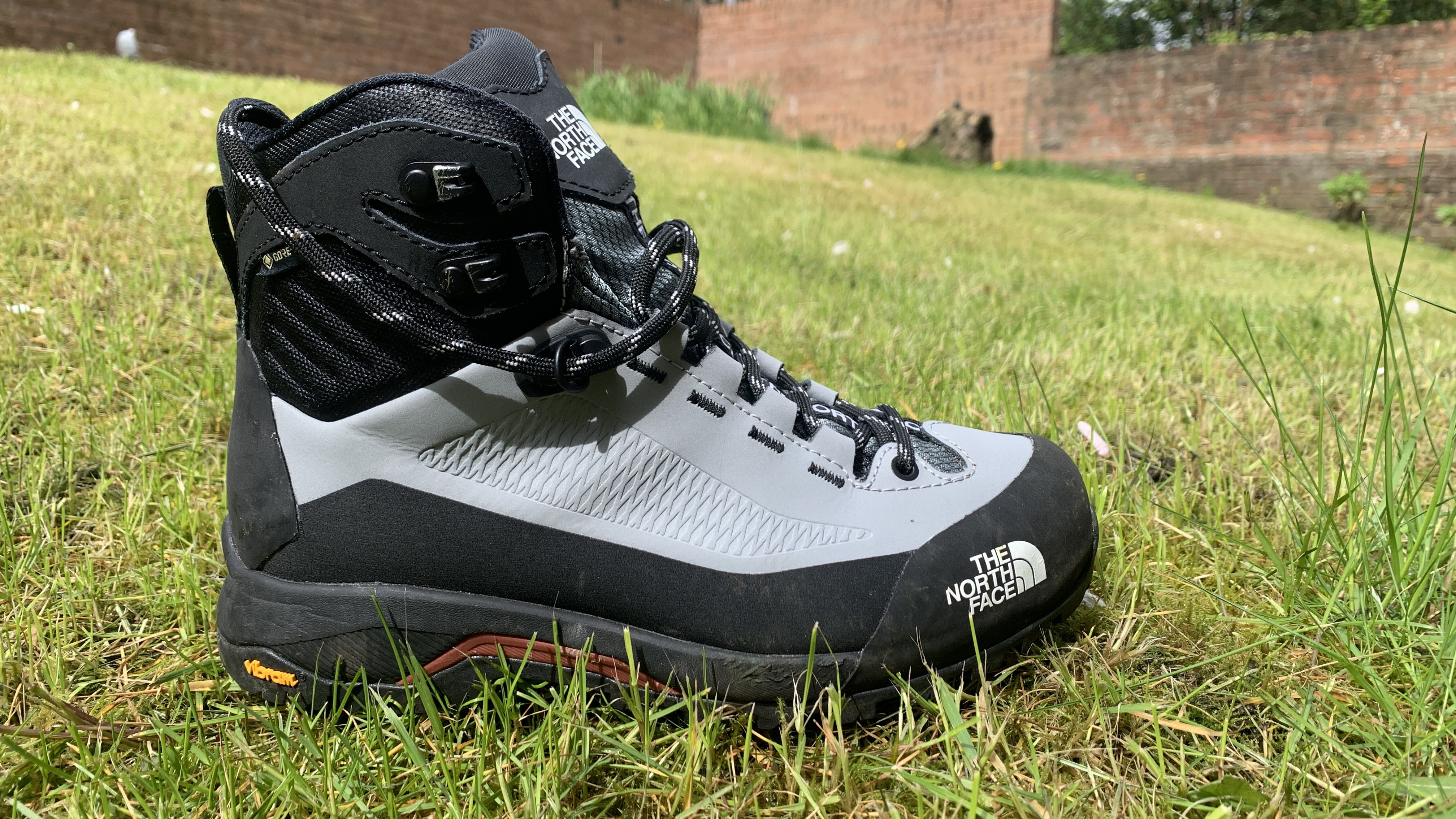
Specifications
Reasons to buy
Reasons to avoid
Built for hiking and via ferratas, The North Face Verto Gore-Tex Alpine Mid Boots combine reinforced leather uppers that support your ankles with a grippy Vibram sole and climbing zone at the toe.
Despite this rugged nature, the boots are also surprisingly lightweight and comfortable straight out of the box, with our reviewer Julia Clarke finding that no breaking in was required. A full Gore-Tex waterproof lining also kept her feet dry on wet trails and in shallow streams, though she notes that the membrane doesn't reach all the way to the top of the boots, so a deeper bog could result in wet feet if you're not wearing gaiters.
Despite the waterproofing, The North Face Verto Gore-Tex Alpine Mid Boots remain breathable, and our expert had no issues with sweaty or uncomfortable feet even when hiking on a warm sunny day. They also provide great protection from rocks, reinforced all the way around with a high cuff and lacing system that keeps ankles supported and secure.
The Vibram sole is a particular standout, with deep lugs that grip onto steep or rocky surfaces, and also cope well with mud.
Read our full The North Face Verto Gore-Tex Alpine Mid Boots review
The best hiking boots for wide feet
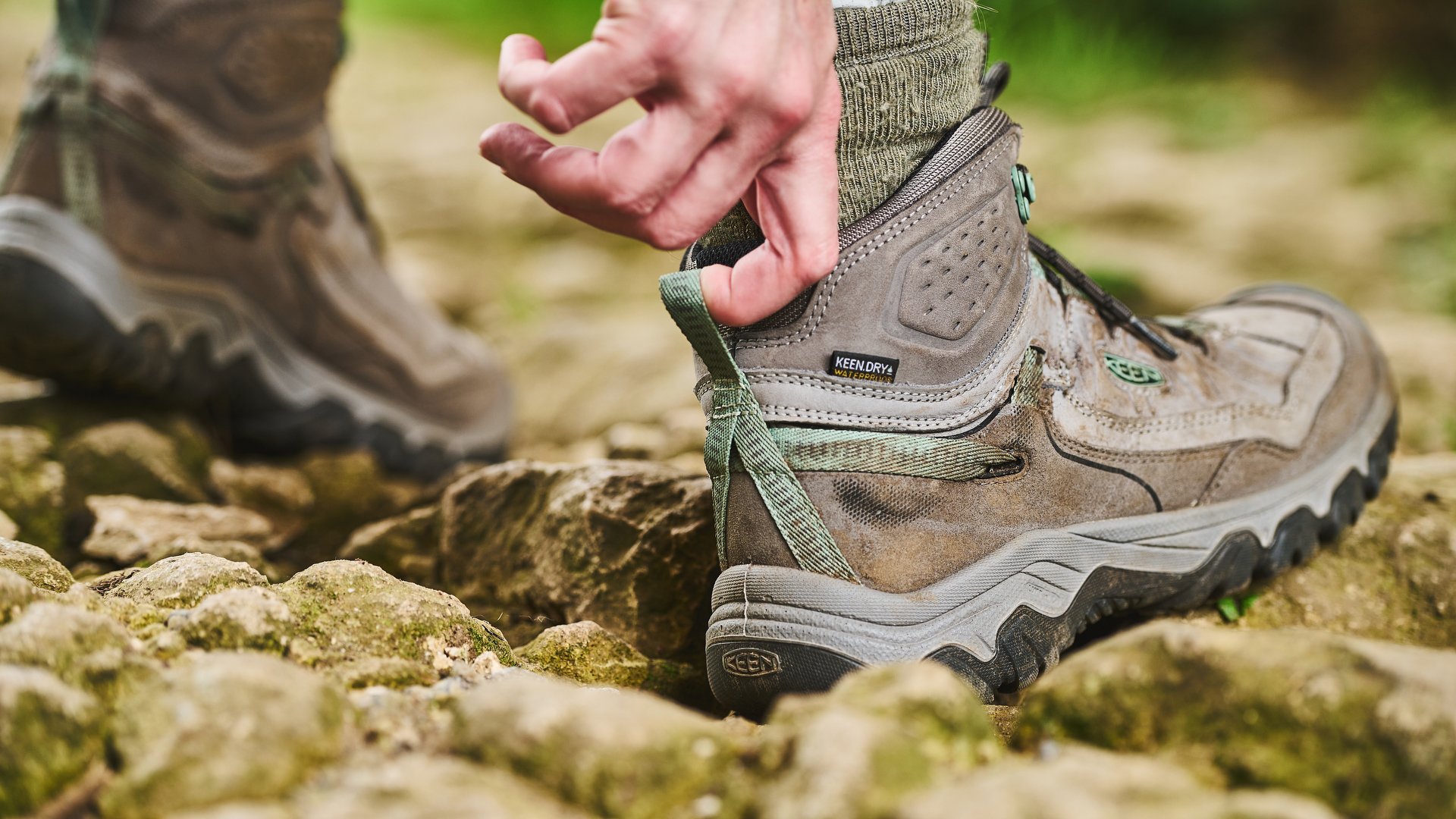
Specifications
Reasons to buy
Reasons to avoid
Keen has become a staple brand for hiking boots, but earlier iterations of the Targhee have suffered from complaints about the sole delaminating. With the Targhee IV the company has set out to change all that.
The new model - available in low and mid versions for men and women, uses a new process to heat-bond the sole to the upper. And the company is so confident in this system, that it's offering customers a delamination guarantee - although this applies in the US only.
Beside the sole, which boasts multi-directional lugs with a fair amount of grip, there's the usual chunky toe bumper that's a hallmark of Keen designs, and a heel lock system that wraps around the foot for a welcome feeling of security. Our tester, editor Rosee Woodland, found they were comfortable out of the box, with decent ankle support and Luftcell cushioning, although the mid sole had more flex than expected.
Waterproofing was commendable, with a bellows-style tongue, and a membrane to stop your feet getting soaked. When she accidentally ventured into boggy ground the Targhee IVs didn't let her down.
Keen is known for a wide fit and wide toe box, so don't choose these boots if you have narrow feet. If you are used to 'normal' boots giving you the squeeze though, you should be pleasantly surprised. The insulation isn't enough to make these a true winter boot, but for three-season wear they are more than up to the task.
Read our full Keen Targhee IV mid hiking boot review
The best hiking boots for support
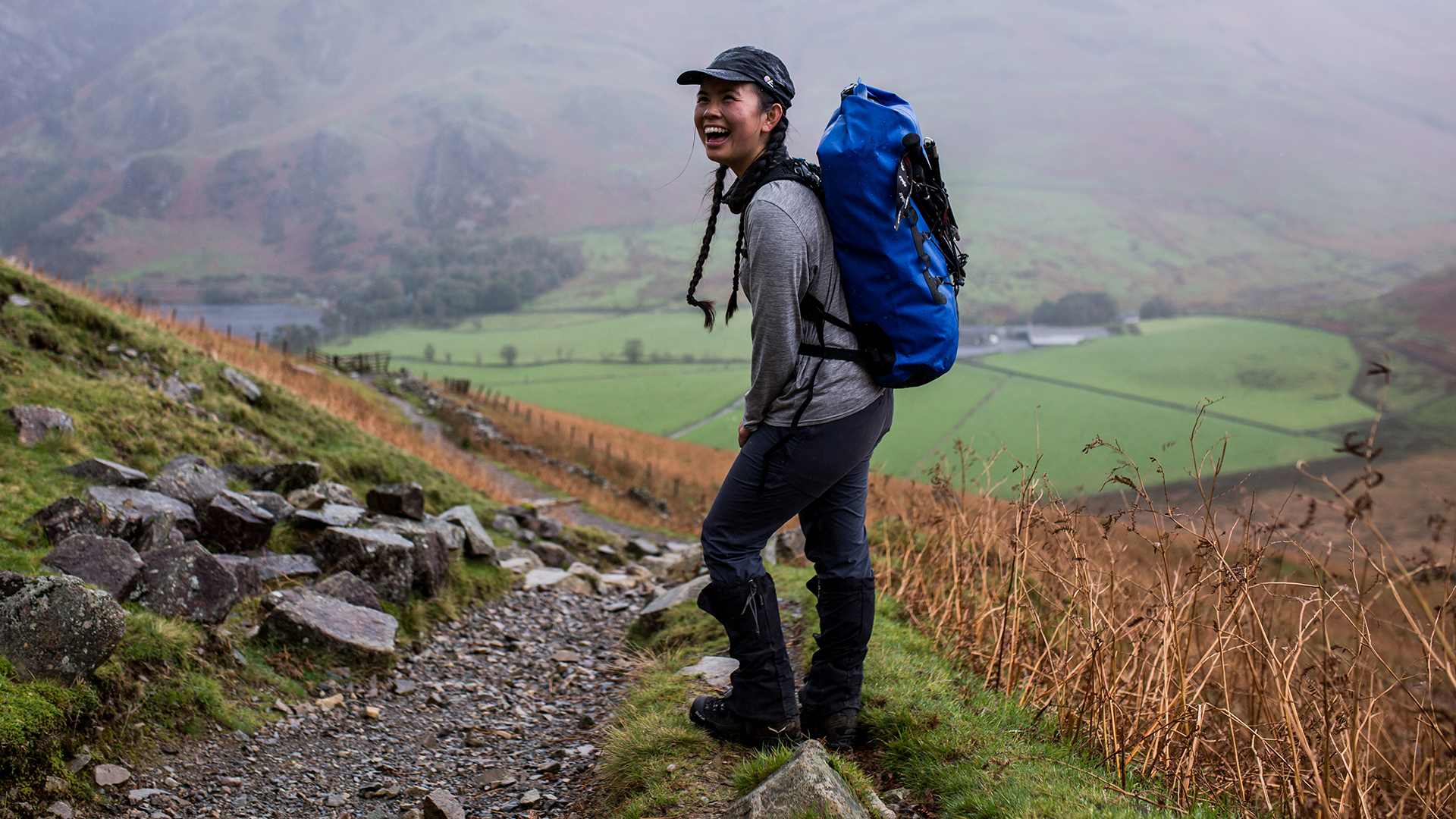
Specifications
Reasons to buy
Reasons to avoid
A robust, durable and stiff moutaineering boot that can be worn year-round, the Salewa Ortles Ascent Mid Gore-Tex Boots are one of the sturdiest and most supportive models out there. Salewa's 3F System uses steel cables to provide structural support, while a reinforced rand gives structural support around the front toe bed. The sole itself is made of a stiff nylon carbon fiberglass insole, layered with a dual density expanded polyurethane midsole for additional stability.
Our reviewer Jessie Leong found that the boots' 3D lacing helped keep her feet in place while cinching the boot tight, though they did take some breaking in. The support and grip were great for giving her confidence on steep mountainous terrain in all weathers. And if you want a little extra hold, they're also semi-crampon compatible.
The Salewa Ortles Ascent Mid Gore-Tex Boots also have durable, long-lasting lugs that provide good grip and are 'self-cleaning', which means they won't hang on to clumps of mud. They're a reliable choice ideal for anyone who needs good ankle support.
Read our full Salewa Ortles Ascent Mid Gore-Tex Boots review
The best hiking boots for summer
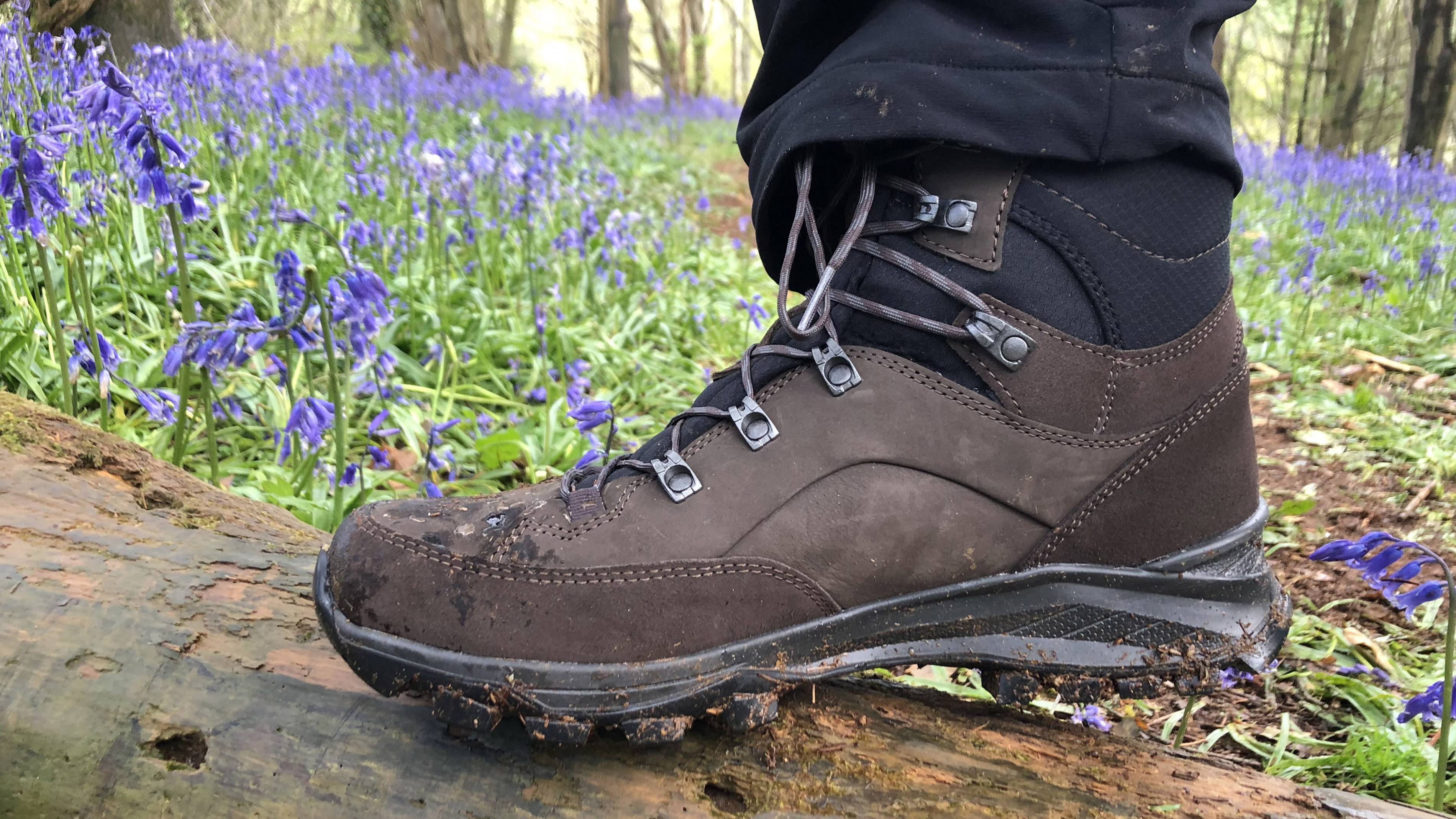
Specifications
Reasons to buy
Reasons to avoid
This version of the Hanwag Banks has been 15 years in the making. During that time the Bavarian-based designers have been constantly evolving the last for this family of boots in response to hikers’ heartfelt feedback, and the men’s version is now available in versions made with a normal last, and a straight-fit extra last. Our expert tester Pat Kinsella discovered that the Vibram sole offers excellent grip, although the lugs are nowhere near as aggressive as some of the more technical boots featured here.
It's primarily designed as a hut-to-hut hiking boot, for use in the lower areas in late spring to early autumn, but there’s a reinforced PU-foam wedge in the heel to increase cushioning during foot strike, and to improve the roll-off as you take your net step. The 100% PFC-free upper is made from certified-sustainable Nubuck leather, and there’s an option to go with or without the Gore-Tex liner (the alternative option being you stick with the comfy leather lining).
Read our full Hanwag Banks review
The best hiking boots for winter
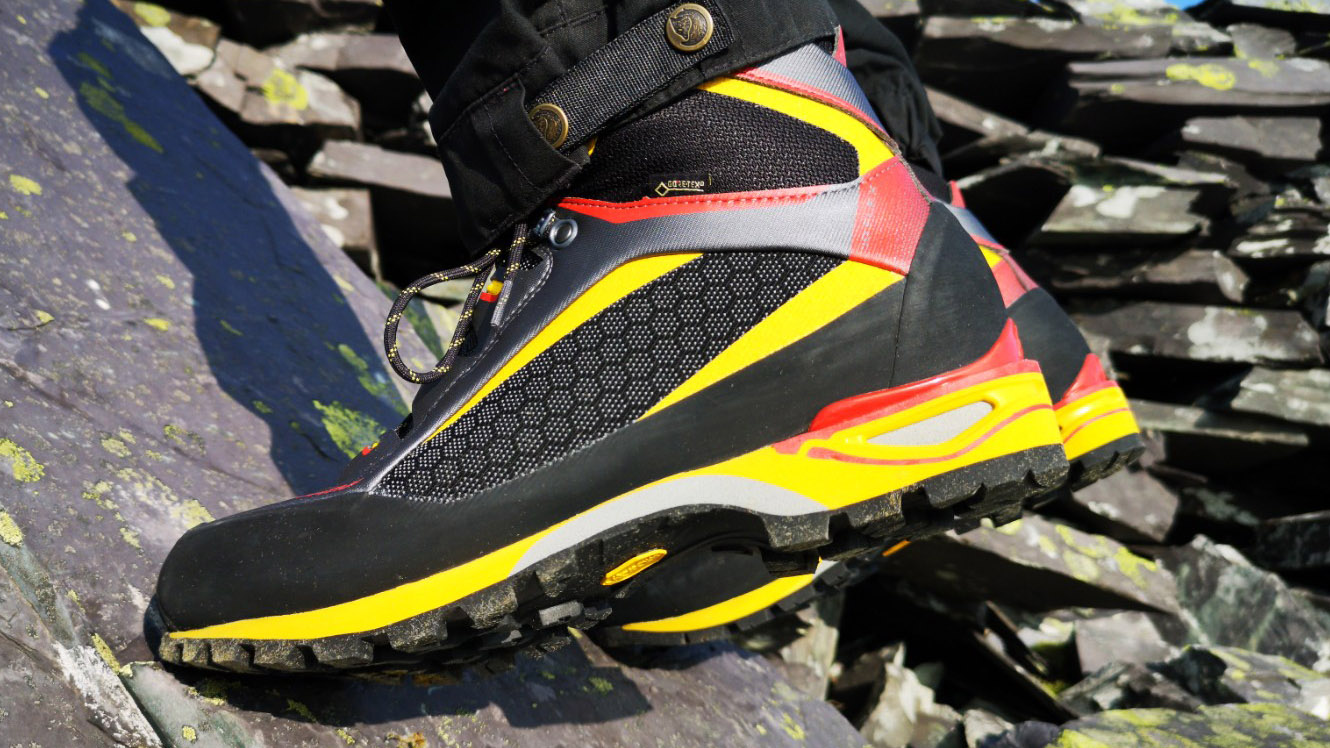
Specifications
Reasons to buy
Reasons to avoid
An instantly striking-looking boot, the Trango TRK GTX boasts a distinctive and durable waterproof upper constructed from top-quality 1.6mm-thick Idro-Perwanger leather. Beneath the bright and brazen outer, a breathable Gore-Tex performance comfort membrane works its magic to complete the breathable waterproofing system.
La Sportiva’s excellent 3D flex system facilitates impressive bendiness both between the ankle and the foot, and across the toe region, while attempting to maintain a level of rigidity across the sole that’s crucial to confident rock work. Our tester Craig Taylor found the Vibram Mulaz rubber sole to be stickier than a good old pub floor, making this a great boot for scrambling. The rear lugs and the impact brake system help maintain control and traction on tricky terrain and steep slopes, and the sole also features a technical ‘climbing zone’ beneath the toe, ideal for rock edging and use on via ferratas.
Read our full La Sportiva Trango TRK GTX review
How we test the best hiking boots
Our reviewers test hiking boots across varied terrain, including technical trails, in a range of conditions, with and without backpacks. Specific features (including foot and ankle support, toe and heel protection, cushioning, waterproofing, breathability, grip, materials used and general comfort) are tested against claims made by the brand, and we assess factors such as durability, environmental impact and value for money.
Meet the testers
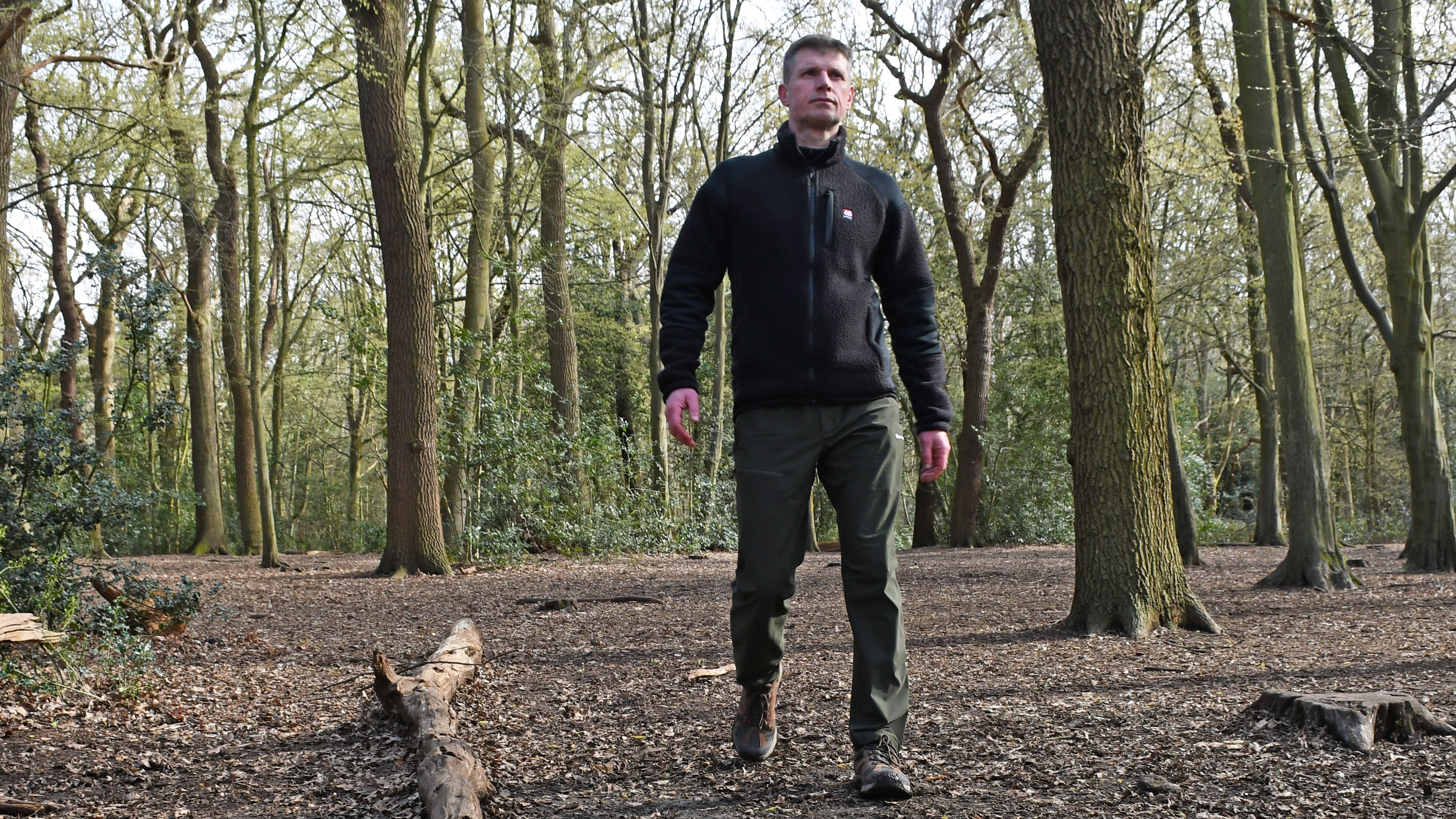
Writer, editor and enthusiast of anything involving boots, bikes, boats, beers and bruises, Pat has spent 20 years pursuing adventure stories. En route he’s canoed Canada’s Yukon River, climbed Mont Blanc and Kilimanjaro, skied and mountain biked through the Norwegian Alps, run an ultra across the roof of Mauritius, and set short-lived records for trail-running Australia’s highest peaks and New Zealand’s Great Walks. He’s authored walking guides to Devon and Dorset, and once wrote a whole book about Toilets for Lonely Planet. Follow Pat’s escapades here.
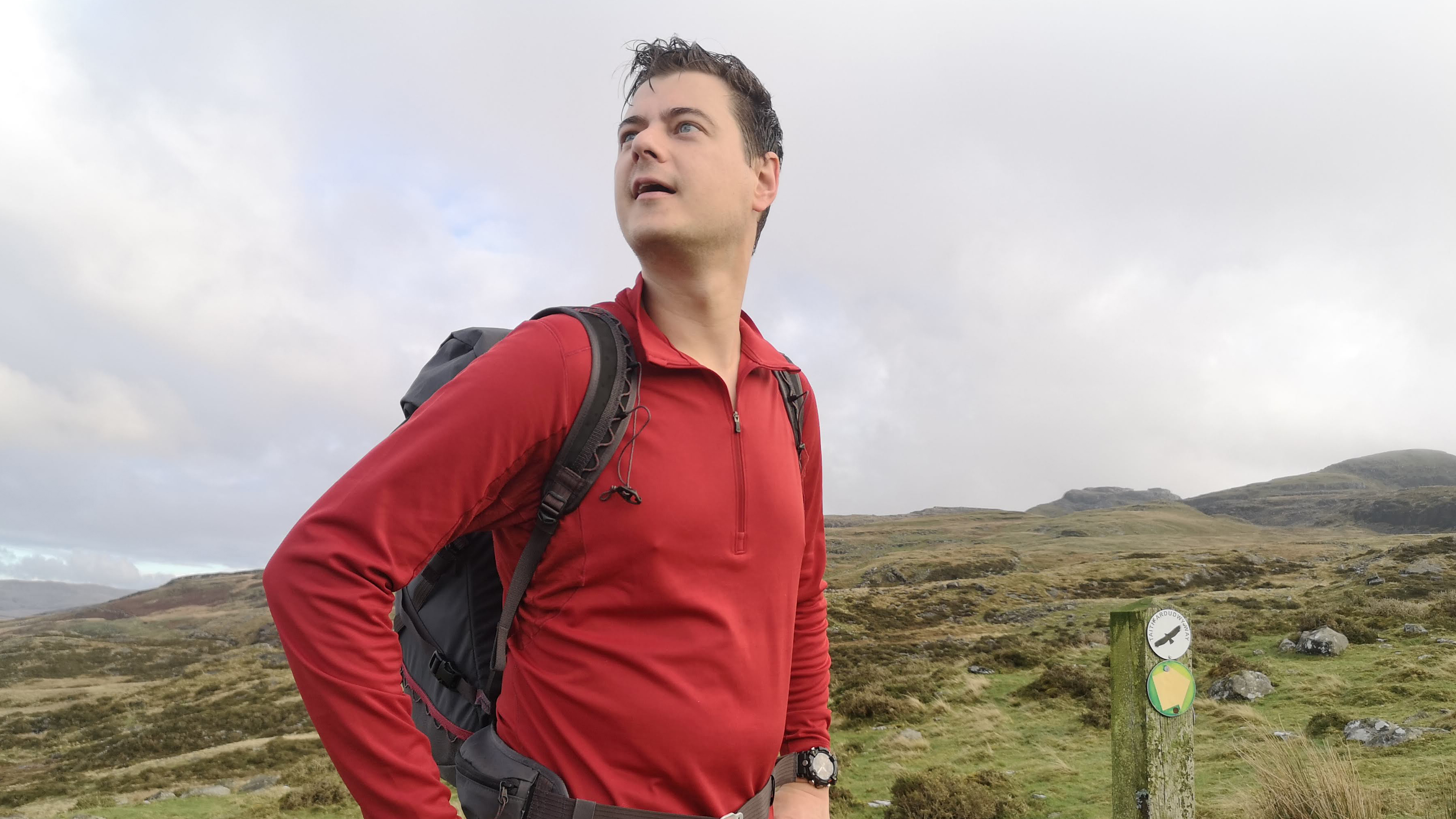
An outdoors writer and editor, Matt Jones has been testing kit in the field for nearly a decade. Having worked for both the Ramblers and the Scouts, he knows one or two things about walking and camping, and loves all things adventure, particularly long-distance backpacking, wild camping and climbing mountains – especially in Wales. He’s based in Snowdonia and last year thru-hiked the Cambrian Way, which runs for 298 miles from Cardiff to Conwy, with a total ascent of 73,700 feet – that’s nearly 2½ times the height of Everest. Follow Matt on Instagram and Twitter.

Alex is a qualified Mountain Leader and writer with an insatiable passion for the mountains. A Cumbrian born and bred, his native English Lake District has a special place in his heart, though he is at least equally happy in North Wales, the Scottish Highlands or the European Alps. Through his hiking, mountaineering, climbing and trail running adventures, Alex aims to inspire others to get outdoors. He is currently President of the London Mountaineering Club, training to become a winter mountain leader, looking to finally finish bagging all the Wainwright fells of the Lake District and hoping to scale more Alpine 4000ers when circumstances allow.
FAQs
What are the different parts of a hiking boot?
The upper: The upper is the part of the boot that covers your foot, providing protection and support. It's usually cut higher than on other forms of outdoor footwear like trail running shoes or hiking shoes, providing more ankle support. It's typically made from leather or synthetic fabrics.
The insole: The insole is the part of the boot that your foot rests on. It's invariably padded and is usually removable, meaning you can replace it with one that's more suited to your individual requirements.
The midsole: The unseen part of the boot that lies between the insole and the outsole and provides both cushioning and support. In hiking boots it tends to be made from either cushioned EVA (ethylene-vinyl acetate) or polyurethane, which is more durable.
The outsole: This is the highly durable part of the boot that comes into contact with the ground and is usually made from rubber. It features grippy lugs to provide traction on different surfaces. In some boots, the outsole curves upwards at the toes, providing additional protection.
How to choose the best hiking boots
When thinking about how to choose a pair of the best hiking boots, first consider if you need to make such a serious purchase. If you're looking to do fairly straightforward day walks in temperature conditions, you will look a little bit daft turning up in boots that could tackle Mount Rainier. Better to go for a pair of hiking shoes or a trail running shoes if this is you; they'll feel lighter and your feet won't cook in the heat.
Boots become absolute hiking essentials once you get more technical trails of the coasts, hills and mountains. This is when comfort and grip become your biggest priorities when looking at the best men's hiking boots. A well-made flexible boot with good lugs and mid-height ankle protection will suffice perfectly.
However, as trails become more technical — especially if they traverse high-alpine areas with exposed rock, snow and ice — rigidity across the sole of the boot becomes a real requirement, along with better thermal properties and the additional ankle protection offered by a higher cuff.
In the following overview of things to look for when buying, you'll come across a few terms that you might not be familiar with. If you're in need of a jargon buster, check out our explainer on the parts of a hiking boot, which is summarised in our FAQs above.
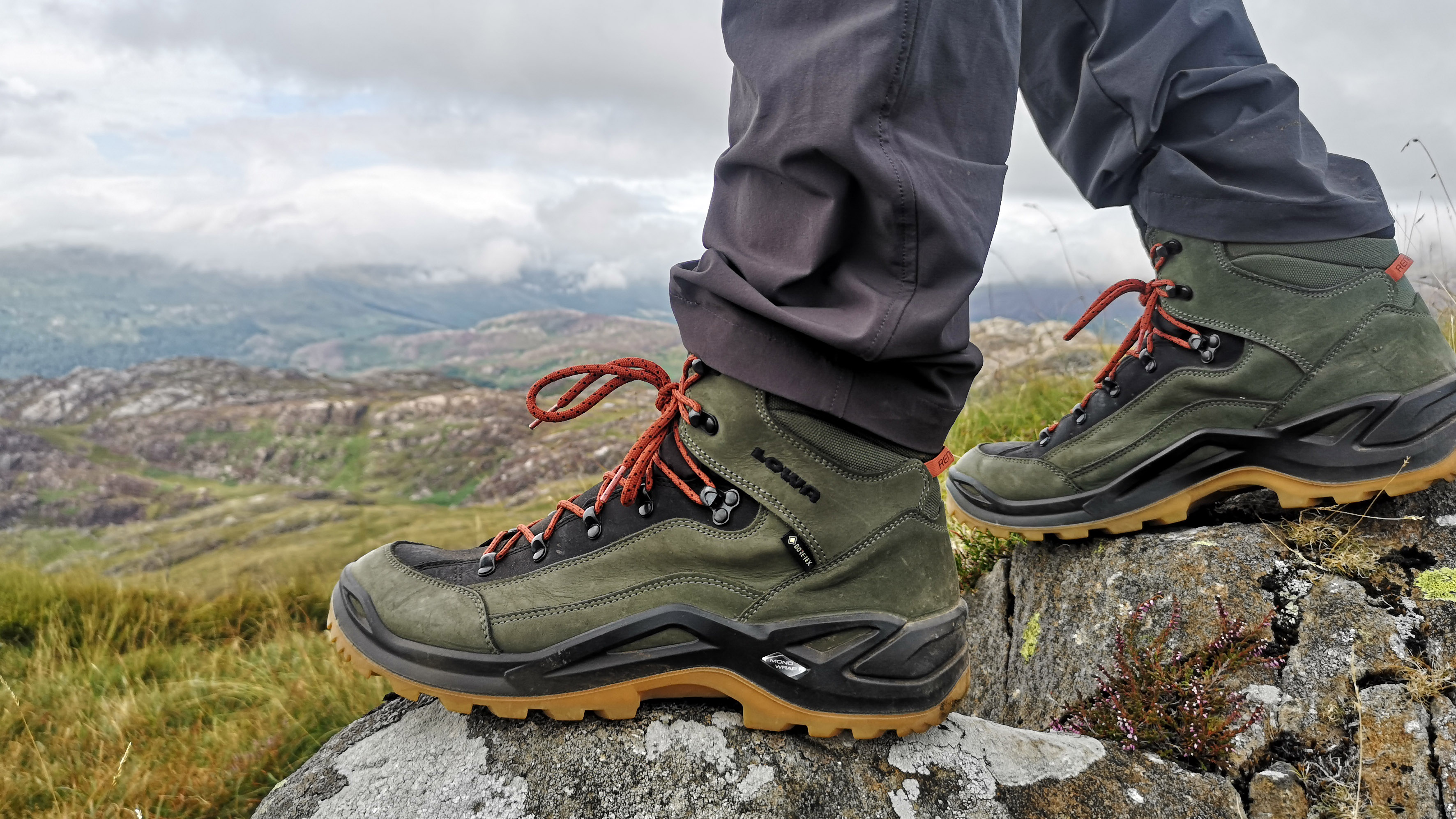
Fit and comfort
A well-chosen pair of men's hiking boots should last several years. When it comes to the best hiking boots, comfort is just as important as performance, so you actively look forward to getting back on the trails. Poor-fitting boots can cause blisters, coldness, toe injuries, general discomfort and even accidents, all of which will discourage you from going hiking again. Of course, you should always take time to break in hiking boots after purchasing them.
All brands have their eccentricities – such as a tight toe box – and some tend towards being larger or smaller than you might expect for the size, so try before you buy if possible. Factor in the need for a good hiking sock – our guide to the best hiking socks you can buy will point you in the right direction.
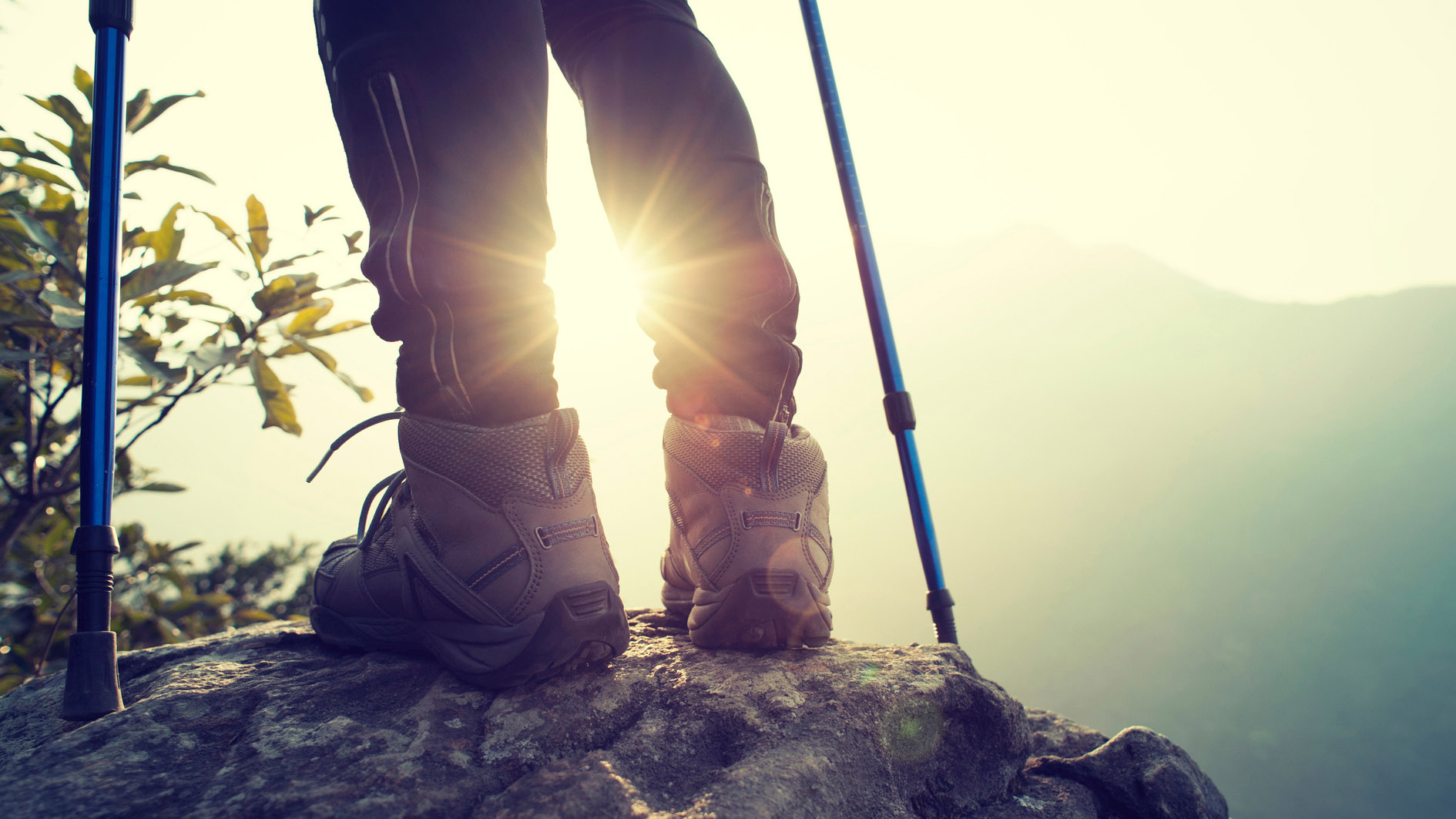
Weight
Every ounce counts when you’re hiking and never is this more pronounced than in the boot department – if you feel like you’re walking around with feet clad in concrete, the experience will be utterly miserable from start to finish, especially if you are tackling a long thru-hike. A lightweight option could turn what would have been a suffer-fest into an absolute joy.
Of course, there is a trade-off – greater protection usually comes at a weight cost, so more extreme trails will demand studier and heavier hiking boots. As a rule, though, cheaper, less technical boots made with inferior fabrics and technologies will be heavier than their more finessed and thought-through counterparts. Our selection of the best men's hiking boots takes this into account.
Support
The tougher the terrain you’re tackling the greater level of protection and support you’ll require. Mid-height boots, or even the best trail running shoes, might be fine for low-alpine adventures in dry environments, but once you start taking on mountain trails that venture across exposed rock, scree, snow and ice, you will need more support and rigidity to help with edging, prevent the likelihood of slippage and ankle injury, and provide more protection.
When you are burdened by more weight, such as a large backpack for a multiday wilderness trip , your centre of balance and natural stability will be affected. This increases the need for more supportive, control-enhancing footwear. Even with a pair of the best trekking poles along for the ride, if you're manoeuvring around rock formations and hopping across streams, you'll need that support. Good grip is essential for technical descents, and your knees will thank you for choosing a boot that absorbs some of the impact incurred during repeated footfall.
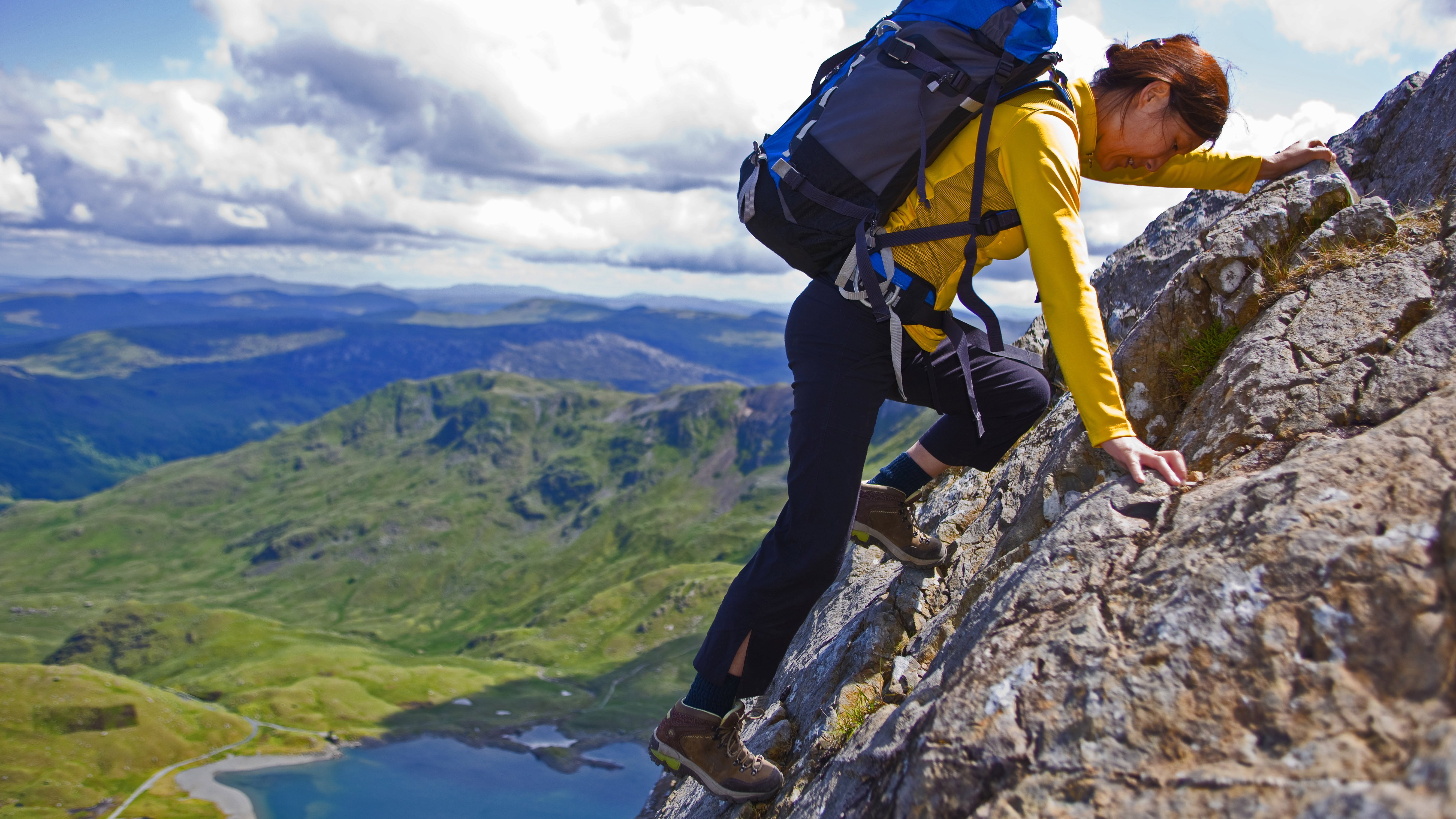
Price
Choose a good pair of hiking boots now and you’ll get many miles of action out of them – so it’s well worth investing time and some hard-earned cash on better materials. While there’s a limit to everyone’s budget, any investment made in serious kit (and boots are the most important things in your trail toolbox bar none) serves as inspiration to get out, go further and explore more.
That said, many brands offer a non-waterproof iteration of their boots for hiking in hot or dry climates, and although invariably cheaper than their higher-spec counterparts, it’s a mistake to dismiss these as the poor cousins of the range. The best men's hiking boots are tailored according to the needs of the user and, worn in the right terrain, will be more comfortable than the pricier option.

Seasonality
The best hiking boots for summer differ from the best hiking boots for winter. Most hiking boots are 3-season, though most can cope with winter hikes until crampons are needed above the snowline. However, once in the realm of ice and snow, winter boots are essential for your own safety.
Due to their need to offer exceptional support, a rigid-crampon compatible sole and weatherproof qualities, winter boots tend to be more expensive and heavier. If you are looking to hit the trails this summer, a lighter, 3-season boot will suffice.
Advnture Newsletter
All the latest inspiration, tips and guides to help you plan your next Advnture!

Author of Caving, Canyoning, Coasteering…, a recently released book about all kinds of outdoor adventures around Britain, Pat has spent 20 years pursuing stories involving boots, bikes, boats, beers and bruises. En route he’s canoed Canada’s Yukon River, climbed Mont Blanc and Kilimanjaro, skied and mountain biked through the Norwegian Alps, run an ultra across the roof of Mauritius, and set short-lived records for trail-running Australia’s highest peaks and New Zealand’s Great Walks. He’s authored walking guides to Devon and Dorset, and once wrote a whole book about Toilets for Lonely Planet. Follow Pat’s escapades on Strava here and Instagram here.
